|
Chapter Four
The Crystal Towers of the Moon
"It is very strange the way the ejecta... from Proclus crosses
Crisium. It is almost like flying above a haze layer and looking
down through the haze... It looks like it is suspended over it."
Al Worden, Apollo 15 Command Module Pilot
By the time Mars Observer had (apparently) taken its leave of the
solar system, Hoagland was quietly into a new, parallel line of
"artifacts" research.
With no foreseeable new images of Mars for at
least a half decade to come - Hoagland was able to focus full time
on this promising new investigation, begun around 1990.
Working on the assumption that an advanced, space-faring
civilization had flourished and "cared enough to leave the very
best" on Mars in the distant past, Hoagland concluded early-on that
they would also likely have visited other planets or moons in the
solar system. The most obvious place to find these telltale signs of
prior visitation, it seemed to him, was Earth's own Moon.
With much
of the satellite already photographed at medium and high resolution
by NASA for and by Apollo, and with Brookings's recently-acquired
independent projections pointing to the same location, "Luna" seemed
the best bet to continue the search for additional NASA confirmation
of ancient archeological ruins in the solar system.
After considerable successes with speeches at the UN and also at
NASA, which had attracted a loose, informal group of other talented
researchers to the project from a variety of disciplines, Hoagland
felt confident in his ability to gather additional contributors of
the diverse backgrounds he considered essential for expanding the
current "Mars" investigation to the Moon.
However, independently, Dr. Stan McDaniel had decided to form his
own, separate working group, to be called "SPSR" (Society for
Planetary SETI Research). Hoagland, along with all the academic
folks who had gravitated to this unusual research because of
Hoagland, had been asked to join. All immediately said "yes"...
except Hoagland.
He was reluctant for several reasons.
First, he objected to the use of the term "SETI." This was a moniker
developed by Carl Sagan for the use of radio astronomy to scan for
stray radio signals from other stellar systems, and stood for
"Search for Extraterrestrial Intelligence."
Hoagland felt that the
use of SETI gave unnecessary credibility to what he had come to
believe was a waste of time at best or an outright scam at worst. No
truly advanced ET culture would use communications as simple radio
when they could use "scalar," or hyperdimensional technologies
instead.
Hoagland also felt using this term gave Sagan the political playing
field, and would permit him to hold an unearned sway over the
philosophical development of what was essentially a brand new
science - "extraterrestrial archaeology."
He also could not abide by one of the dictums of McDaniel's new
organization - that no "NASA conspiracies" now existed.
For some reason, McDaniel had decided to back down from the
conclusions of his own voluminous Report, following Mars Observer's
bizarre "disappearance," and retrench to the "honest but stupid"
model to explain NASA's behavior vis-a-vis Cydonia.
After twelve
years of playing the game NASA's way, and after the blatant
skullduggery and deception around the whole Mars Observer debacle,
Hoagland simply couldn't stomach that. The two men had one final
conversation in which McDaniel implored Hoagland to join the group,
but when Hoagland turned him down, McDaniel parted with him
bitterly.
After working closely together on McDaniel's seminal,
brutally honest expose' on NASA and Cydonia for over a year, the two
now rarely communicated.
Hoagland realized that everything up to this point had been merely
"foreplay"; from here on, he was going to have to pursue the wider
truth about what NASA had been consistently, consciously,
deliberately hiding for decades - not only from the American people,
but from the people of the entire world-Alone.
With his gaze now squarely fixed on the Moon, Hoagland faced only
one considerable technical problem: where to start?
The Moon is a big place, with a land area larger than the African
continent, and there were literally tens of thousands of photos from
the various Lunar Orbiter, Surveyor, Ranger and manned Apollo
missions.
There was an extensive database, including an official
NASA Study, of so-called "transient lunar phenomena" (brilliant but
brief flashes of light that have been recorded by observers for
centuries), but the TLPs didn't seem to really follow any
discernable pattern.
From one of his sources, Hoagland had been provided a lunar photo
catalog from the 1960s, containing state-of-the-art ground-based
telescopic images of various lunar features. It was on one of those
Earth-based images that Hoagland spotted his first clue as to where
to begin looking.
Hoagland acquired this historic lunar atlas, compiled by the Space
Sciences Laboratory of the old "North American Aviation, Inc." in
September 1992, a few days after the lift-off of the Mars Observer.
At first glance, each photo resembled the next - distance and
close-up shots, craters and maria. Then his eye fell to the
southeast corner of page 241, where the crater Triesnecker first
appeared in the collection.
One Xerox enlargement later, and
Hoagland knew he had taken his first step on what was to become a
new research project bridging the gap between the Earth, Mars, and
now the Moon. This extraordinary photo revealed an unmistakable
image of an equilateral triangle - the 2D foundation of tetrahedral
geometry and hallmark of hyperdimensional physics - immortalized in
a lunar crater... in the center of the Moon [Fig. 4-1]
Was it "a trick of light and shadow," as NASA likes to say... or
was it real?
Armed with a 486 personal computer, a 1600 dpi scanner and a variety
of then state-of-the-art digital photo-processing software - more
powerful than all the millions of dollars in equipment and manpower
that NASA had twenty-five years before - Hoagland began anew to
analyze, from his desktop, old NASA photos and negatives - beginning
with Apollo 10 and the unmanned Lunar Orbiter and Surveyor Programs.
Hoagland had already discovered he was not the first to consider the
anomalous aspects of various NASA lunar images. There was a sizable
database of clearly disingenuous "UFO literature" out there on the
subject, which in the years following Apollo had been taking
increasingly misleading aim at NASA's missions to the Moon.
Much of
this "investigative literature" claimed, with the aid of the
inevitably blurry "official NASA photographs," that NASA had
discovered, and then promptly hidden, conclusive evidence of
contemporary extraterrestrial bases on the Moon.
Since these same
authors demonstrably could not tell the difference between genuine
artifacts and simple photographic defects, the idea of taking any of
this evidence as indicative of any kind of authentic alien lunar
presence seemed absurd. One writer even insisted that water-droplet
"pull-apart marks" on an unnamed NASA Lunar Orbiter frame (from the
film's development in zero-g) represented arrays of "lunar clouds"
and "dammed-up ponds of water" on the airless Moon.
Unfortunately, while a source of much amusement, none of this helped
him narrow down the best areas to search for genuine artifacts.
There was one interesting possibility: perhaps potential lunar
artifacts, like the ruins at Cydonia, might be locatable through the
same type of "hyperdimensional grid" that had been successfully
applied to Earth by Carl Munk and several others.
These coordinates
related ancient terrestrial sites (the Giza Plateau in Egypt,
Teotihuacan in Mexico, etc.) to the geometry supplied by the Martian
complex at Cydonia. Setting up a similar grid for the Moon, Hoagland
reasoned, might narrow the location of potential lunar artifacts to
a relative handful of locations out of literally millions - but that
still left an awful lot of lunar real estate to try to examine in
detail.
Now fate took a hand, and completely undercut all his previously
outlined careful strategy for how to begin looking at the Moon for
compelling evidence of intelligent design. It provided Hoagland, in
late 1992, with one particularly egregious example of those
previously cited, wildly unsupported lunar ET claims: Fred
Steckling's someday sure-to-be-a-classic (because it is so bad)
paperback We Found Alien Bases on the Moon.
In Steckling's non-stop
comedy of errors, misidentified photographic defects and general
mish mash of mal-illustrated misinformation, one lunar image
suddenly stood out: three reproductions (at various magnifications)
of a single, hand-held Apollo orbital frame acquired by an astronaut
"sometime during the mission of Apollo 10."
The badly reproduced images in Steckling's book, complete with
arrows, purported to show several current lunar "domes" on the Sinus
Medii plain, just east of the famous, aforementioned "Triesnecker."
Further up in the image, on the outside of the shadowed southern
slope of the nearby crater,
Ukert (over 100 miles away, yet also carefully marked by another
prominent arrow) - the dark, foreboding "entrance to an underground
alien base" was allegedly shown.
Hoagland looked hard, but could see nothing. Still, in looking at
Steckling's reproduction, he was immediately intrigued by a pretty
weird "coincidence"; Ukert was none other than the very same
"triangular crater" he had seen in the lunar atlas, perhaps implying
that this particular area, indeed, did have "special significance."
His eye then fell on a formation immediately adjacent to and
southeast of "Ukert": a curious, rectilinear arrangement of small
hills, dark grooves and suspiciously parallel lines in the middle of
one representation of the photograph, apparently completely
overlooked by Steckling.
Honed by almost a decade of grappling with the Cydonia geometry amid
the jumbled mesas and dunes of the Martian sands, the blatantly
obvious geometric order of this remarkably compact arrangement on
the Moon-grouped, like Cydonia, in a very tiny geographic region -
almost leaped off the page [Fig. 4-2].
Awestruck, he took out a ruler and began to measure - but even as he
confirmed more and more regular geometry in this one tiny geographic
region, he couldn't help wondering: Why didn't Steckling call the
attention of his readers to this fascinating, highly anomalous,
highly organized formation, instead of having all those silly arrows
pointing at absolutely nothing?
Still measuring, he copied down the Apollo 10 frame number. The next
step involved attempting to acquire, from sources outside NASA,
Apollo 10 photographic maps and other data pertaining to this image.
In this he had another stroke of luck; one of Hoagland's colleagues
had carefully saved original documents from the Apollo missions,
from over a quarter of a century ago. Soon, copies of the crucial
Apollo 10 maps and other documentation were on their way.
When they arrived, it soon became obvious, from even casually
looking at these quarter-of-a-century-old NASA "footprint maps,"
that someone, early on, had very much wanted the Apollo 10
astronauts to simply photograph the hell out of the entire Sinus
Medii/Ukert region [Fig. 4-3].
Given that this was under
consideration as an Apollo landing site, this in itself was not
unusual - but many of the photographs, like AS 10-32-4819 [Fig.
4-2], seemed to focus less on the flatlands where a landing might be
made, and more on the anomalous geometric areas and mountains where
such a landing would be well nigh impossible.
Was NASA looking for "something else" - besides a future Apollo
landing site...?
Then, another opportunity to gain some data on this central region
of the Moon came from a most unexpected source.
During an autumn speaking tour, Hoagland was introduced to a
high-tech inventor and industrialist who had founded a company based
on his perfection of a unique military optical technology.
The
industrialist said he wanted to help (but wished to remain
anonymous). Hoagland was led to believe that, with appropriate
coaxing, this "industrialist" might be persuaded to adapt his
remarkable optical technology for unparalleled terrestrial
observations of the Moon - specifically now, the central Ukert
region.
This strategy, as opposed to going straight to NASA for a negative
of the intriguing Apollo 10 frame, was based on Hoagland's early
suspicion (since disproved) that all easily accessible NASA images
might have been "sanitized" in the intervening thirty years since
they were originally taken, thus making Steckling's frame
immediately suspect.
It was Hoagland's original intention, upon
finding the really intriguing objects on AS 10-32-4819, to attempt
direct confirmation of the largest geometric forms telescopically
from Earth - provided his new "executive friend" cooperated by
providing his "black" technology.
In the course of one of these discussions, held in his firm's quite
impressive, richly paneled conference room on the seventh floor of
his corporate headquarters in a major southern city, the company
founder (who boasted repeatedly of "extensive NASA and military
contacts"... ) told Hoagland that he had been carefully following
his Cydonia work for "several years."
He also informed Hoagland that
high-powered military brass involved in Pentagon "procurement"
(later to lay the groundwork of the Navy's "Clementine" lunar probe)
routinely gathered in his conference room, to watch Hoagland's
latest "NASA-Cydonia Briefing" video (from the UN presentations ...)
on the large-screen television console which dominated one entire
end of the room.
Several times throughout the Fall of 1992, this individual would
call Hoagland without warning from "that" conference room - in the
company of "this Colonel," or "that General," visiting from
Washington, D.C. - while they were (ostensibly) watching the
"NASA-Cydonia" and "U.N." video presentations, so his distinguished
visitors could ask questions directly regarding the Cydonia
investigation.
This didn't mean much at the time, but in hindsight,
has taken on a significantly deeper meaning vis-a-vis recent
developments around the Moon.
These meetings were briefly interrupted by an acceleration of events
occurring on the "Martian front," and the hurried call and a flight
to and from New York to debate Dr. French on Good Morning America.
When Hoagland returned south, his newfound industrial friend
demonstrated his support for opening "a lunar wing" to the on-going
Mars investigation, by presenting him with the rare lunar atlas.
The Atlas provided the key to the entire subject of ancient
artifacts upon the Moon - but before proceeding to the Atlas,
Hoagland brought out his copy of the Apollo 10 image from the
Steckling book, and asked if his "executive friend" could procure a
negative on his behalf through his contacts at the National Space
Science Data Center.
Hoagland told him of his apprehensions
regarding what might happen to the lunar data inside NASA, if he
personally, visibly, involved himself in looking at the Moon, in the
midst of the on-going controversy over the Cydonia investigation. He
then pointed out the fake domes and bases Steckling had noted by his
arrows on the NASA photograph, and his discovery of far more
interesting real geometrical anomalies elsewhere in this same
region.
His executive acquaintance suddenly looked very serious, and asked
to take the image to the firm's copy room to make some duplicates.
Months passed.
Phone calls - lots of phone calls - were exchanged with this
industrial "friend," and the conversations, which began with genuine
excitement over the possibility of verifying a bona fide connection
between Cydonia and a set of artificial structures on the Moon, now
began to shift to the need for "large amounts of money" - a million
dollars - for him to simply point his telescope towards the Moon!
After several months of this, through another friend, a real one
this time, Hoagland quietly placed an order for the Apollo frame
with NASA's Johnson Space Center in Houston.
It came within a week, but with a shock: it wasn't he photo that
he'd seen in Steckling's book.
Hurriedly comparing the features in the image with the Apollo 10
footprint maps, Hoagland now discovered a fascinating fact - the
frame in Steckling's book was not frame "AS 10-32-4810," the photo
he'd just received from Houston. So, what was the NASA photograph
that Steckling reproduced, and carefully mislabeled not once, but
three different times in the same volume?
The Apollo 10 photomap
said "AS 10-3 2-4819," but if Hoagland hadn't had the official AS-10
image footprint map, he'd have been up the proverbial creek...
without a clue as to the real identity of the remarkable image in
the Steckling book (we should probably mention at this point that
Hoagland eventually discovered that Fred Steckling, at one time,
also worked for the CIA...)
The NASA 8 x 10 "glossy" he now held from Houston (AS10-32-4810),
while turning out not to be the one he thought he'd ordered, quickly
turned into another major stroke of luck. Hoagland now discovered it
was the second frame (according to the footprint maps) of an entire
hand-held Apollo 10 photo sequence acquired across the Sinus Medii
region, taken by the astronauts orbiting just south of the craters
Triesnecker and Ukert.
The frame that he'd received allowed, when compared with the image
in the book, an almost 90° perspective on the curious "geometric
square" he'd first noticed on the Steckling image.
Further, if the
first image (which he now knew was really AS 10-32-4819) had the sun
coming from the right, then this image (the real AS 10-32-4810, no
thanks to Steckling) had it coming from over the astronaut's
shoulder, providing critical comparative surface reflectance
information.
Using his enormous thirty-year digital technical advantage, Hoagland
began computer analysis of the Ukert region of the Moon. Curiously,
the location of the Apollo photograph he now had in his possession
was also quite consistent with the "Cydonia grid" discussed earlier
(within a few degrees of the center of the Earthside lunar disc at
00 latitude, 00 longitude).
At times, this sixteen-mile-diameter
crater is directly opposite, or under (if you're standing on the
lunar surface) the "sub-Earth point" (the location on the Moon where
the Earth would be seen directly overhead).
From that point, things developed very rapidly. Hoagland proceeded
to order - from another "inside" source at NASA, then directly from
NSSDC and (simultaneously) through NASA's Johnson Space Center - the
entire 70mm, hand-held photographic sequence taken by the Apollo 10
crew across Ukert in May 1969.
He also widened the investigation by
ordering overlapping Sinus Medii/Ukert data from two previous
classes of unmanned NASA lunar missions (the 1966-1967 Lunar
Orbiters II, III and IV, and the late 1967 soft-landed Surveyor 6
spacecraft). This strategy allowed him to compare three different
photographic technologies, from three different kinds of NASA
reconnaissance missions, from a variety of different lighting
angles, on what he now strongly suspected to exist in the Sinus
Medii region.
When all assembled it made for a compelling case:
That - for the previous thirty years - "someone" inside NASA
(probably, a lot of "someones" ...) had been hiding major segments
of the real U.S. space program - not just on Mars... but on the
Moon.
The alternative hypothesis - that of all the thousands of scientists
in and outside NASA who had examined this lunar information over the
past thirty years, Hoagland was the first to notice anything
"unusual" - was simply not credible.
This distasteful political conclusion was based primarily on his
startling discovery of "blacked out" thumbnail images in official
NASA catalogues-such as the NASA Apollo 10 "special publication"
[Fig. 4-4]. The blacked-out thumbnails seemed to imply that the
images themselves had been dramatically under-exposed, or even not
exposed - and thus were useless.
So, of course, he ordered these blacked out frame numbers from the
catalogs first. When he got them, not only were they not the
hopelessly dark, non-detailed images the catalogs had deceptively
(and obviously deliberately) made them out to be - they were
literally full of new discoveries, and on scale he could not have
imagined....
Ohio State
On June 2, 1994, Hoagland presented the preliminary results of his
two-year old, quiet investigation into the possibility of "alien"
lunar ruins at Ohio State University.
The presentation - made at the largest land grant college in the
United States, which in the 1950s hosted one of the first radio SETI
projects in the world - spanned four hours, and was conducted before
an audience of over 700 students, faculty and members of the general
public.
Anticipating the major interest that would follow, he
arranged for a professional videotaping of the event, later produced
and released as "The Moon-Mars Connection: Alien Ruins on the Moon?"
Unfortunately, several people in the audience recorded the
presentation on home video. And, more unfortunate, inferior stills
from these videos, frame-grabbed and uploaded to the Internet,
instantly appeared around the world. These distorted versions of the
highly controversial NASA data fostered a veritable firestorm of
reaction and misinformation on the information superhighway,
including heated discussions on CompuServe, AmericaOnline and other
then-popular electronic forums.
Due to the poor quality of these
pirated copies of the original lunar images, the electronic
discussions and arguments raging over the reality of the data and
its meaning were not accompanied by anything approaching the quality
of the original supporting evidence.
As a result, serious misinformation on the original analytical
techniques applied and the official sources of this lunar "artifact
data" persists... even to the present.
Because of the diversity of lunar data used in this early phase of
the investigation - a mix of electronic imagery, hard-copy
photographic film and, in the case of the Soviet imaging, even
half-tone reproductions from official NASA publications - it was
decided to reduce all images to photographic prints from the
earliest possible generation negatives (where available), physically
enlarge these negatives at a variety of scales in a professional
darkroom, and then electronically scan the resulting prints.
Because
each photographic print reproduces, on average, only about one
thousandth of the full-intensity exposure range found on the
original negatives, dozens of prints of selected features were often
required to capture the range of detail and light intensity present
on any one NASA "original." This process was continued until the
right combination of exposure and f-stop were achieved to bring out
subtle features.
The derived digitized lunar image frames were then imported into a
variety of commercial and specialized software imaging programs for
compositing, resolution and gray scale enhancement, analysis, and
electronic and hard copy display.
The Shard
The first image presented by Hoagland at Ohio State was an oblique,
medium-angle Lunar Orbiter frame acquired from a thirty-mile
altitude, looking across Sinus Medii to objects located on its
southwest perimeter [Fig. 4-5].
The Lunar Orbiter dataset provided
unique challenges because of the novel way the data was obtained,
sent back to Earth and processed.
The five successful Lunar Orbiter spacecraft utilized two telescopic
lenses, with different focal lengths (magnifications),
simultaneously framing two separate images on one long roll of
ultra-fine-grained, high-resolution Kodak film inside each
pressurized spacecraft Orbiter "bus."
This created a "medium
resolution" lunar image aboard each Orbiter (the "M" frames), and
another, bore-sighted "high resolution" image (the "H" frames).
After all exposures had been commanded from Earth, and the on-board
Orbiter film totally exposed, each roll was remotely developed in
lunar orbit in the on-board (pressurized) "mini photo lab."
Then,
each roll of developed film was scanned (section by section via a
mechanical "flying spot scanner" - a very narrow beam of light, 6.5
microns wide, swept back and forth across the film by a rotating
mirror system), thereby transforming the film image into a gridded
"analog electronic code" corresponding to an array of varying
intensity points across the original photograph.
Subsequently, this
grid code was then used to modulate the spacecraft analog radio
transmissions to Earth, as the image was read out to NASA receivers
on the ground, literally line by line.
(The Russians used an essentially identical film-based photographic/
optical scanning/analog electronic transmission system in their
early lunar probes-including... Kodak film)
Once on Earth, this varying radio signal - a frequency-modulated
analog version of the original scanned film image in the spacecraft
(remember, no digital electronics then, or even "imaging computers"
- in 1966) - was transformed back into photography by displaying the
modulated signal output on an analog "cathode ray tube"
(essentially, a highly primitive, miniature TV picture tube) and
literally photographing the faceplate display.
The 35mm partial lunar positive film image strips thus produced were
then manually pieced together by NASA employees, Army mapmakers and
contractors, and then photographed again - to create "master
original negatives" of each successfully re-assembled, individual
Lunar Orbiter frame (remember, only a generational copy of the
developed film images still physically existing aboard the lunar
orbiting spacecraft itself...), from all five lunar Orbiter
missions.
The first photographic image from this elaborate film/electronic
process that Hoagland was able to acquire and examine (LO-III-84M)
immediately revealed a number of striking, new "architectural"
anomalies.
After optically scanning (again!) an analog photographic print made
from this assembled NASA negative (printed and developed in a
commercial photo lab, in New York City), and then running it through
his own computer-enhancement process, Hoagland reviewed the results:
one highly anomalous object immediately "popped out" above the
distant lunar horizon on frame "LO-III-84M" - directly beneath a
geometric calibration "cross" [Fig. 4-5] placed by Kodak on the
original NASA film during manufacture.
Dubbed "the Shard" by Hoagland, the extraordinary object stood about
1.5 miles above the lunar surface (judging by the spacecraft
geometry of the original image acquisition), instantly making it a
truly inexplicable new wonder of the Moon, if not the universe.
On a bashed and battered lunar surface, exposed to billions of years
of unshielded asteroid and micrometeorite bombardment, the Shard was
a highly anomalous, defiantly upright, "bowling-pin" shaped
structure - with an irregularly-pointed apex, a swollen middle
"node" and a narrowing "foot."
Back toward the northeast (right) in the Lunar Orbiter III
photography lay the equally-curiously-shaped shadow of this
astonishing object - mirroring to a remarkable (and crucial) degree
the Shard's unique morphology. The readily-apparent shadow was
precisely consistent with the local geography on which "the Shard"
was sitting (an ancient lunar ridge).
In addition, the shadow was
also consistent with the time of the month, the Lunar Orbiter camera
angle, and the actual sun-angle illuminating this object when the
image was initially acquired: mid-February 1967.
It was this shadow - more than any other single aspect of this
object - which, in the eyes of many observers, solidified the
Shard's reality as an extremely anomalous, potentially manufactured
lunar structure.
The sheer height and shape of this object - a rough spire, over a
mile and a half tall - also argued forcefully for an origin far more
recent than the extremely ancient, rounded and eroded lunar
landscape that surrounds it.
Located on the southwest perimeter of
Sinus Medii, across a large ancient crater called Flammarion, the
Shard has somehow managed to defy the laws of entropy that have
blasted those surroundings, according to geochemical and isotope age
data returned by the Apollo missions, for eons.
This "incessant
meteoric rain," in the absence of "recent" geologic activity, should
have reduced this object to rubble indistinguishable from its
surroundings billions of years ago - but there it defiantly,
inexplicably, still stood.
There were other, crucial clues that the Shard was, in fact, a real
object - still standing upright against gravity on the lunar
surface. One was its alignment with the local vertical rather than
with the "grain" of the Lunar Orbiter film; the second, was a highly
geometric internal "organization" [Fig. 4-6].
This striking pattern - which strongly supported the initial
impression of "artificiality" - was composed of a repeating,
complex, internal crystalline geometry, visible all throughout the
object; additional Hoagland computer enhancements of additional
enlarged prints, also made from NSSDC negatives of III-84M, revealed
this stunning, internal pattern was made up of highly reflective,
cubical - possibly hexagonal - geometric "compartments," greatly
damaged but still visible and overwhelmingly redundant.
Resolution estimates, based on the Lunar Orbiter acquisition
geometry, indicated the "cell size" of this geometry to be at least
several times the resolution of the imaging enhancements
(approximately seventy meters).
Furthermore, this still- visible
geometric pattern also was not orthogonally controlled (as if
imposed as an aspect of the rectilinear pattern of computer pixels
in the computer scanner, or on the display screen), but appeared to
be determined by an internally consistent, intrinsic, architectural
pattern inside the object itself.
Finally, a series of fine vertical lines appeared to overlay this
astonishing structure - with bits and pieces of brighter material
still suspended on these vertical "lines" off the main apex of "the
Shard" - as if on a separate, rigid matrix entirely surrounding this
highly exotic lunar structure.
The overall impression one was left with was that of a
once-much-larger, complex, glass-like, artificial object - now
extremely eroded by eons of meteorite impact processes.
Since it is virtually impossible to argue with the shadow cast by
the Shard, and since the object's very existence (therefore
established) argues forcefully for its artificiality, some critics
have looked to alternate explanations for its presence in
LO-III-84M. It has been suggested, for instance, that the "Shard"
may be a transient "out-gassing" event, fortuitously captured by the
Lunar Orbiter camera.
While this cannot be totally discounted (based
on Nikolai Kozyrev's cited, widely accepted detection of such a
previous event, in fact not too far away, in the crater Alphonsus,
in 1958), the absence of any diffusion around the Shard's sharply
defined edges - and all that obvious internal geometry-works heavily
against this explanation.
But there was an even more compelling argument favoring the Shard's
reality, to be made right from the same LO-III-84M frame: the
striking presence of "the Tower"....
The "Tower/Cube"
The "Tower/Cube" anomaly, seen to the left of the Shard in an
enlarged portion of III-84M, appeared at first to be merely a smudge
on the original full-frame NASA photograph [Fig. 4-7].
With a "tail"
extending down toward the lunar horizon, it bore an eerie similarity
to the Shard, although it appeared to be much more massive. Other
explanations were immediately considered - perhaps it was a comet?
A quick historical search revealed no such passing solar system
object in February, 1967.
OK, then, maybe a nebula: a cloud of gas and dust deep in
interstellar space, serendipitously captured in the line of sight by
the Orbiter's camera as it photographed the Moon; or, perhaps it was
even a much more distant galaxy, likewise "coincidentally captured"
on this one Lunar Orbiter III image beamed back to Earth in February
1967.
In other words, it was possible that this peculiar "smudge" could be
one of a variety of mundane deep space objects - all far beyond the
Moon.
A brief calculation, however, quickly eliminated any of those
possibilities. NASA's published data on Orbiter photography showed
that the f-stop setting for this image was 5.6, the shutter speed
l/100th of a second.
Simultaneously capturing the bright lunar
landscape and a faint background interstellar "nebula," on the same
photograph, with those specific camera settings, on this type of
slow-speed, fine-grained film, would be technically impossible. If
the camera aperture was held open long enough to capture such an
incredibly faint object, the brilliant, sunlit lunar landscape would
have been completely blown out.
(This, of course, is a simple fact of optics and 1960's imaging
technology that the lunar hoax proponents never seem to "get":
imaging the daytime sunlit Moon, and incredibly dim background stars
(or nebulae) simultaneously, was just impossible in 1966 from Lunar
Orbiter... and, in 1969-1972, with similar Apollo film cameras.)
With these possibilities eliminated, the other "mundane" explanation
- that the feature was merely a photographic blemish - was also
eliminated, through independent analysis by photographic experts at
High Definition Image Photographic Laboratories in New York.
It was only after High Definition reproduced literally dozens of
differently-exposed versions of this object (by printing the NSSDC
negative over and over again at various exposure settings), with
Hoagland repeatedly scanning the results until all the subtle
details were brought out, then subjecting those raw scans to a
series of extensive computer-imaging enhancements, utilizing a
variety of digital filters within various commercial imaging
programs, that the truly extraordinary nature of this remarkable
"tower/cube structure" was fully revealed...
...as a massive, obviously glass, "megacube" - sitting more than
seven miles above the Moon [Fig. 4-8].
More than a mile across (at an estimated distance of ~300 miles from
Lunar Orbiter), the "Cube" itself appeared to be composed of
literally dozens of smaller cubical (and/or hexagonal)
sub-structures; the smallest of these details visible on frame
III-84M measuring at least fifty or sixty times the size of the
individual computer "pixels" of the imaging enhancements.
Comparison of the digitized, enhanced computer version of this
object with the "raw" photographically-enlarged prints (viewed under
a magnifier), confirmed the presence of the same, highly anomalous,
internal geometric structure on both versions - analog and digital.
"This was critically important as a control," to rule out simple
"computer artifacts" as the cause of the blatant geometric structure
seen in the digital enhancements.
A different type of computer enhancement of the cube, this time
specifically for "edges," revealed almost endless, repeating
examples of much smaller, obviously geometric structure throughout
its surviving mass.
The constant meteor erosion was apparently
abrading the structural detail from the outside in - with the most
exposed "beams" and "girders" now visible on the exterior; the
densest mass remaining was therefore concentrated toward the
interior... where the greatest light-scattering (roughly
proportional to the surviving mass) was still occurring.
In other sections of this enlarged and enhanced image, long,
vertical "transitions" - created by apparent "refraction-effects" -
could also be traced, as if portions of the background object were
being viewed through a heavily-distorting medium, located much
closer to the spacecraft.
This glittering, long eroding, giant "mega-cube of glass" was, in
turn - upon examination of the various computer enhancements - also
confirmed to be perched atop a "glittering glass tower"...
stretching that "seven miles" down to the overexposed lunar surface
[Fig. 4-9].
This "Tower" appeared to taper towards that surface, and
simultaneously, to be leaning in a southerly direction in the
photograph. This obvious departure from the local vertical (similar
to the internal details in the "Shard") could be directly connected
with the distance of this object from the Lunar Orbiter - cruising
thirty miles above the Moon, looking downward toward the lunar.
A
"real object," connected with the surface by an actual vertical
tower, could indeed appear to "lean," if,
-
it was located closer
to the spacecraft than the "Shard," or
-
was in the process of
intrinsically "slowly tipping over"... from more inexorable effects
of constant meteor erosion, across literally millions of years
The first possibility would be due to the relatively sharp curvature
of the Moon's circumference, coupled with a sharper downward
"look-angle" required for the Orbiter to view a closer object.
The
second was simply endemic to the obvious great age of this
astonishing, formerly geometrically perfect, massive lunar artifact
that Hoagland had discovered.
Uncertainty in deciding between these two different explanations for
"the leaning tower" effect was keyed directly to a major uncertainty
in the actual height/scale of the "Tower/Cube" combination itself -
which, in turn, was critically dependent on the actual distance from
the Lunar Orbiter camera and the observed structure's elevation.
The primary reason for the latter uncertainty was the additional
discovery (on the computer enhancements) of a much fainter,
surrounding
"grid-like framework." This enveloping structure appeared to be
composed of more highly reflective "debris," sparkling around the
"Tower/Cube" itself, embedded in a much darker, vertical matrix
Hoagland termed "rebar" (for reinforcing bars).
The scattered,
highly reflective fragments seen apparently clinging to a darker
"grid" are consistent with this "two-component" matrix:
micrometeorite sandblasted "glass," and a surrounding, darker
"structural material."
This "prairie fire effect" stretched from south of the Tower/Cube,
north past the "Shard" (which also seems to be embedded in this
stuff), until the grid disappeared out of frame, still heading
north. Somehow, these scattered, massive fragments of reflective
"stuff - like the Tower/Cube - were also suspended against airless
space above the Moon.
Thus, the implied necessity for some kind of
extensive, darker "rebar" matrix, to hold them up.
It was apparently an intervening portion of this vertical glass
"grid" which was causing the strong refractive effects seen in the
close-ups of the "cube."
Not only is all this patently absurd within any current (or
proposed) "geologic model" of the lunar surface, it totally supports
the concept that the Tower/Cube (and the Shard, not too far away)
are but remaining fragments of a once far-larger, also clearly
artificial structure, apparently once composed of glass (a lot of
it)... and, attached to some kind of darker, vertical, overarching
structural framework.
The existence of these few remaining "glittering glass fragments"
from this former complete structure - viewed by Lunar Orbiter
stretching north along the western edge of Sinus Medii - is what
prompted Hoagland to propose the one-time existence of an
artificial, very ancient "Sinus Medii Dome" - formerly completely
enclosing this central "maria" on the Moon.
Analysis of Apollo images of this same western Sinus Medii region -
AS 10-32-4854, AS 10-32-4855 and ASIO-32-4856 [Fig. 4-10] -
confirmed the presence of the Tower/Cube, and from a completely
different mission than Lunar Orbiter (Apollo 10).
This confirmation
came via a different technology (actual film, personally shot by a
NASA astronaut himself and physically returned to Earth - as opposed
to being scanned), and from a very different photographic azimuth
(45°) from the original Lunar Orbiter III frame discussed above.
The
time of lunar day, and thus the lighting for this Apollo imagery,
was also clearly different - just before local sunrise during Apollo
10's photography, as opposed to "mid-morning" for III-84M - but...
the shattered remains of some kind of "tower," extending upward from
a shattered glass horizon - with a glittering glass cube still
visible on top of it - was still there.
These multiple, independent appearances of the Tower/Cube on Lunar
Orbiter and several, subsequent Apollo 10 photographs, not only
confirms the surprising context in which it is embedded - a
"grid-like" matrix, stretching far north along the western edge of
Sinus Medii - these images, when magnified, confirm the highly
structural details of both the Cube as well as the relationship of
this amazing object to its supporting tower (which has the
appearance in the Apollo images of multiple supporting arches),
stretching in multiple, increasingly conspicuous layers down to the
surface of the Moon:
all apparently part of a once far larger,
intact Sinus Medii "dome-like" geometric structure - now almost
completely obliterated by an unknown (but certainly immense) amount
of exposure to unshielded meteorite bombardment on an airless lunar
surface.
As the investigation progressed from a handful of early NASA lunar
images through to the current database of literally hundreds of
sophisticated imaging enhancements, evidence steadily accumulated
consistent with this "lunar dome hypothesis."
This evidence now
strongly argues, not only for the existence of a former, miles-high,
multi-layered "Dome" once stretching over all of Sinus Medii, but
increasingly for the existence of other "lunar domes" as well,
constructed over other, widely-separated locations on the Earthside
lunar surface - now visible from Earth as the classic lunar "maria."
As impossible as that may seem, the more NASA images that Hoagland
studied, the more evidence in support of this seemingly outrageous
idea inexorably accumulated....
Surveyor 6 - "The Sinus Medii Dome"
Surveyor 6 successfully landed on the Moon in November 1967 - thirty
or so miles west of "Bruce," a small five-mile wide crater near the
center of Sinus Medii. From there, the unmanned Surveyor spacecraft
took over 35,000 low-and high-resolution images of the surrounding
lunar landscape by means of a 600-line analog television system.
After local sunset, on November 24, an additional set of
time-exposed images were acquired looking west, for purposes of
studying light-scattering properties in interplanetary space caused
by the solar corona, far beyond the lunar horizon.
One such image was intensively analyzed during Hoagland's initial
lunar investigation.
The analysis yielded a remarkable corroboration
of a peculiar light-scattering phenomenon strongly correlated with
the geometric optical anomalies observed by Lunar Orbiter III and
Apollo 10 (the Shard and the Tower) approximately 100 miles
southwest of the Surveyor 6 landing site-along the western edge of
Sinus Medii.
This Surveyor 6 image differs, however, in one dramatic detail from
the other NASA images previously analyzed: those photographs
recorded these enigmatic geometric structures in back-scattered
light (with the sun more or less behind the camera).
The Surveyor
image, with its remarkably brilliant beads stretching along the
western horizon and an intensely geometric structure of scattered
light seen against the airless lunar sky above it - was taken with
the light coming from the front, from beneath the western horizon
[Fig. 4-11].
The Surveyor 6 photography of "brilliant beads of light" along Sinus
Medii's western horizon, recorded over an hour after sunset, was
considered-even by NASA in 1967 - as "a remarkable discovery."
However, subsequent official efforts to explain this inexplicable
phenomenon (on an airless world ...) focused exclusively on
"forward-scattering, caused by small, electrostatically elevated
particles of lunar dust..." redirecting sunlight from beyond the
visible horizon, as seen from the location of Surveyor 6.
However,
later "in-situ" studies of lunar surface processes, accomplished by
analyzing actual dust samples returned by the Apollo astronauts from
elsewhere on the lunar surface, effectively eliminated
"electro-statically suspended lunar dust particles" as a probable
cause of the intensely brilliant "beading" seen in the Surveyor
after-sunset images.
Which leaves a major mystery - what could cause such intense
illumination, for more than six lateral degrees along the western
horizon and more than an hour after sunset - so as to completely
saturate (according to NASA's own studies of the images) - the
Surveyor vidicon television system within the "beads" themselves?
It was Hoagland's contention that this phenomenon could only be
caused by forward refracted sunlight: the myriad, tiny lens-like
images of the actual Photosphere of the sun, being literally bent
(for over twenty miles) around the sharp curvature of the lunar
horizon by the densest layers of his surviving "lunar glass dome
architecture"...just above the lunar surface.
The much fainter - but extraordinarily geometric latticelike
structure seen arching far above those mysterious brilliant beads
along the horizon, in Hoagland's model - was crucial supporting
evidence for the model's ultimate reality.
This delicate geometry
was not merely the sun's distant corona seen against space (as NASA
claimed), but was caused by the still geometrically organized, still
surviving bits of glass and rebar physically present at much higher
altitudes, faintly scattering (as opposed to refracting) the
brilliant light of the sun still directly visible at their high
altitude down toward Surveyor's camera... in these blatant, highly
geometric patterns [Fig. 4-12].
Patterns which, of course, couldn't exist in this form in the sun's
high-temperature corona - located literally millions of miles beyond
the Moon.
The astonishing discovery of a highly geometric structure - just
above the beads - on the original Surveyor after-sunset image is
completely inconsistent with any radial, ray-like pattern expected
for a true coronal photograph. It is, however, remarkable additional
support for the presence of a former geometric lunar dome - now in
ruins.
These collective optical phenomena, in Hoagland's analysis, could
only be caused by the remnants of some kind of ancient, massive,
glass-like, originally highly geometric architecture - still
anchored in the lunar surface and extending literally miles above.
This was precisely the same kind of lunar construction that was
strongly implied by the independent Lunar Orbiter and Apollo 10
observations of the miles-high "Shard and Tower" (on approximately
the same Sinus Medii meridian - but over 100 miles south of the
Surveyor 6 landing site).
Eons long meteorite abrasion would work from the top down -
stripping glass from its supporting rebar high above, but leaving
greater amounts of protected, remnant glass structure closer to the
horizon (from the vantage point of the Surveyor spacecraft) -
precisely as the surface images portraying the anomalous horizon
beading strongly implied.
Later in the investigation, on analyzing one of the Apollo 10
Hasselblad shots taken by the crew as they flew over Sinus Medii in
May of 1979 (AS10-32-4816), Hoagland discovered some astonishing,
totally confirming close-ups of this amazing "rebar" [Fig. 4-13].
It is now crystal clear from all of this official NASA imagery that
there indeed, once existed a magnificent, incredibly sophisticated,
geometrically complex, artificial dome-like architecture -
stretching all across what today is seen by Moon watchers as "just
another barren lunar lava flow" in Sinus Medii.
What it must have looked like in its "heyday" - and what it may one
day tell us of its long-vanished, extraordinarily gifted architects
and construction engineers - can only be imagined from its ghostly
remnants, which still glitter - ancient and mysterious - literally
miles above the Moon ....
Ukert - "Los Angeles"
Of all the evidence analyzed in the early investigation of potential
lunar artifacts, none was more revealing, both scientifically and
politically, than the acquisition and examination of Apollo 10 frame
AS 10-32-4822.
What makes this all the more remarkable is the fact
this frame supposedly "does not even exist" - as can be seen by
examination of a portion of the official NASA mission catalogue for
Apollo 10, published immediately after the 1969 mission, SP-232
[Fig. 4-14].
Hoagland's initial efforts to acquire even one version of 4822 began
in 1992, in Houston at NASA's Johnson Space Center, where the Apollo
photography acquired by the astronauts was initially processed on
their return from the Moon. To his surprise, the commercial photo
lab delegated by NASA to respond to the request (not in Houston, but
in Dallas) promptly sent a high-quality version of this supposedly
"missing image" - completely belying the blank frame printed in the
official mission catalogue.
It was on this initial version of this crucial Apollo 10 image that
a remarkable, highly patterned, geometric surface region of the
Moon, just northeast of Ukert, first appeared.
Hoagland quickly realized that this pattern defied conventional
explanation. One consulting geologist even nicknamed the region "LA.
on the Moon," because of its strikingly urban appearance.
In the photograph, over an area roughly equivalent to the real Los
Angeles on Earth (hundreds of square miles), there appears a
remarkably regular, rectangular, raised, repeating 3D geometric
pattern.
Large surface lineations - stretching for tens of miles,
appearing remarkably similar to streets running across the actual
L.A. basin in Southern California - crisscross this northeast Ukert
region in a rectilinear pattern.
Here and there, small round craters
cut into the areas of sharply contrasting, remarkably rectangular
relief, like mile-sized cookie cutters. In a close-up from 4822
[Fig. 4-16], this rectilinear, artificial block-like pattern,
interspersed with a smattering of remarkably uniform impact craters,
is even more apparent.
Overall, the overwhelming impression is that of finding a vast,
ancient, bombed-out city on the Moon.
Images taken of this same region only moments earlier - such as
Apollo 10 photograph AS10-32-4819 [Fig. 4-15], with a more "over the
shoulder" illumination - underscore this city-like "LA." comparison.
Under both lighting angles, this region unmistakably resembles
war-devastated city blocks and buildings, now lying in
hundreds-of-square-mile ruins.
Within this general, very artificial-looking landscape, a series of
smaller, very brilliant, horizontal, vertical and near-vertical
features also appear - some clearly resolved as rectangular
structures, others as possible "sky-scrapers" (on the scale of the
images); other features are seen as merely brilliant, geometrically
arrayed points of light - possibly specular reflections from
surviving optically flat areas similar to "windows" or entire glass
walls.
And, if you look very closely, you'll see that all the features are
vertically distorted on a very fine scale... as if the photograph
had been taken looking at "L.A." through wavy glass!
Because... that's exactly how it was taken - through the same vertical
"glass/rebar" matrix demonstrated with the "glass cube and tower"
earlier.
Years after the preceding analysis, Hoagland (with the help of Steve
Troy) found a second set of Apollo 10 images of "LA. on the Moon":
the "4600 series."
One such image (AS 10-31-4652) revealed an astonishing perspective:
layer upon layer of obviously geometric glass, reflecting the
brilliant light of the rising sun almost directly back toward the
approaching spacecraft.
One can clearly see multiple "layers,"
"floors," and innumerable "right angle" of what can only be
geometrically-arranged "manufactured structures."
There are even what appear to be "suspended walkways" and
"transportation bridges" clearly visible [Fig. 4-17].
There is simply no plausible explanation for these incredibly
reflective, geometrically aligned, transparent structures except an
artificial one...
Subsequent to the presentation of this data at Ohio State, some
unofficial reaction by NASA officials attempted to dismiss the
anomalous geometric pattern northeast of Ukert as nothing more than
"standard lunar geological activity": lunar lava flows cooling to
create geometric fractures, subsequently excavated and exposed by
"random meteorite impacts."
This glib explanation completely ignored simple facts about such
cooling processes familiar to geologists on Earth; such as the fact
that on this planet, the size of such typically expected lava
fractures is mere inches, or at best, feet... not thousands of feet
as observed in the city-block-sized pattern photographed, on
multiple Apollo 10 images (and from almost a full 180-degree arc)
near Ukert!
This early, semi-official explanation" for the astonishing surface
geometry seen near Ukert also blithely ignored the fact that
billions of years of meteorite impacts should have created impact
debris (a lunar regolith) sufficient to bury any such original
natural lava fractures.
They would not reveal a rigidly-controlled
network extending both laterally and vertically orders of magnitude
(factors of 10, 100 and 1000 ...) beyond any known geological
analogs on Earth.
When such trivial explanations to explain this mystery are firmly
put to rest, we are left with a real scientific puzzle: what natural
forces could have possibly created, and then preserved, such a
stunning 3D geometric pattern? If it was formed billions of years
ago, when lava last flowed across the Moon (according to Apollo's
dating of the returned rocks), what could have maintained such a
striking, regular geometry against the inevitable forces of erosion
(even on the Moon) for those billions of years?
It is our contention that no such natural model can, even at this
point, adequately explain "L.A. on the Moon."
Thus, only an
artificial model - which automatically incorporates tall,
rectangular structures, a rigidly controlled, rectilinear horizontal
layout, coupled with a relatively "recent" time frame (because of
limited erosion) - is the only serious contender.
And, of course, no "geological" explanation can possibly account for
the fact that the astronauts took these amazing Hasselblad images of
"LA. on the Moon" through wavy glass - located (impossibly)
somewhere "between" the surface... and the orbiting Apollo
spacecraft.
A separate estimate, based on NASA's attempted measurements of the
rate of past and present impact crater formation on the Moon (that
smattering of "one-to-two mile craters" lying over "L.A.," mentioned
previously), independently supports a relatively "young" geological
age for this enigmatic pattern near Ukert - a "few hundred million
years," at best.
If that is the actual age of these remarkable
geometric formations, this opens up literally astounding
possibilities for "who" might have constructed "L.A. on the Moon,"
if not the "when" and "why."
But beyond "L.A." - which was bizarre enough - the real prize of
4822 turned out to be what, at first, appeared to be just a small
"scratch" on the negative.
Triesnecker - "The Castle"
The Castle [Fig. 4-18] is another glittering, remarkably intact
geometric formation Hoagland first identified on a special version
of frame 4822 - provided him by "a highly-placed" source at NASA's
Goddard Spaceflight Center in 1992.
Bearing a striking resemblance
to "Schloss Neuschwanstein," built by King Ludwig II of Bavaria in
1869 (which served as the model for Cinderella's Castle in
Disneyland) it is, in fact, another astonishingly real lunar
artifact "hanging high" above the Moon.
The Castle's location on the lunar landscape is as remarkable as its
appearance.
As judged by the geometry on frame 4822, this highly anomalous
object is actually suspended some nine miles above the lunar
surface, somewhere between the eighteen-mile diameter crater,
"Triesnecker" and the well-known "Hyginus Rille."
A composite of three close-ups [Fig. 4-19]- a "raw" version on the
left, and two enhancements (right, and bottom) - reveal additional
extraordinary aspects of this object... including the fact that,
like the "cube/tower," the "castle" too is surrounded by a faint
matrix of "sparkling geometric 'stuff.'"
There is also the striking
presence of a clearly sagging cable seen at the very top of this
amazing artifact... to which the obviously large and massive
structure is physically attached!
Eventually identified on two separate NSSDC versions of "4822," the
Castle has presented Hoagland's critics with a series of
extraordinary puzzles, beginning with the obvious:
What's holding it up?
Stereo analysis of these two "versions" [Fig. 4-19] confirmed the
Castle's presence miles above the lunar surface - apparently just
"hanging out in space."
Around it, as previously noted, appeared a
collection of much smaller, equally reflective geometric slivers -
as if all were simply fragments of a once much larger, previously
intact, somehow suspended structure.
A separate clue to the anomalous height of all these objects came
from their remarkable surface brightness, particularly the Castle,
compared with the lunar surface below.
The fragments all appeared highly reflective - much brighter than
the actual lunar surface far beneath. For some reason, across all
the 4822 frames, there was a curious "optical veiling" of this lunar
surface (viewed from left to right [Fig. 4-20] This "veiling"
extended from below the Apollo spacecraft's location, out across the
Hyginus Rille to the horizon - and a twenty-five-mile diameter
crater barely visible there, called "Manilius."
This crater is
hundreds of miles from the Apollo spacecraft, yet both it and the
lunar horizon around it were inexplicably "fuzzy" - as if darkened
by the same mysterious "obscuration" covering the lunar landscape
much closer to Apollo.
In fact, this entire airless lunar landscape, lit by a mid-morning
sun, should be brilliantly illuminated; instead, across more than
half the frame, this striking scene was mysteriously shrouded by
some kind of "dark, highly absorbent, apparently highly directional,
optical medium" (think "window slats," or "blinds") - with only the
Castle and a scattering of other, equally reflective debris
apparently left sticking up above this "interfering layer" into
unimpeded sunlight.
With no definable lunar atmosphere - rain, fog or clouds, or any
other form of familiar terrestrial optical absorption mechanism -
the only logical explanation for this obscuration and fuzziness
(after the possibility of simple photographic defects to the
original 4822 negatives had been eliminated - which it was) is that
the Apollo astronauts actually photographed the remains of some kind
of remarkable, constructed optical anomaly stretching over the
eastern end of Sinus Medii - a semi-transparent, glass-like,
mechanical medium, with remarkably focused optical properties when
viewed from key directions.
In other words, the Apollo 10 crew, via 4822, apparently recorded
another section (far northeast of the Tower/Cube remains) of this
extensive "Sinus Medii dome."
The most visible, most blatant anomalous object on 4822 is, of
course, the Castle - which, to be so strikingly visible, must be
hanging above the heavy optical obscuration blanking out the lower
levels of the Dome, and (from the angle of the photograph) the
sun-drenched lunar surface underneath.
In an effort to confirm his
findings, Hoagland began ordering (through additional friends and
acquaintances) more copies of AS 10-32-4822 from various NASA
archives.
To his surprise he discovered that there was something
even stranger about the image than the simple fact that it was
blacked out in the catalogs-it seemed to exist, simultaneously, in a
number of "different" forms - but all labeled with the identical
frame number:
AS10-32-4822.
Comparison of "the Castle" in his original Goddard version of 4822
with a second copy provided by a student, Alex Cook (who ordered it
separately through Goddard), revealed a major surprise:
Alex's copy
turned out, in fact, to be a completely different photograph,
hitherto apparently unknown.
Cook's "4822" thus immediately formed a
natural stereo pair to the "4822" that Hoagland had obtained
completely independently (from his NASA-Goddard source, in 1992).
Setting up both photographs side-by-side for stereo viewing revealed
several startling new details about "the Castle"... and frame 4822
[Fig. 4-21].
In Hoagland's original version, the amazing drooping cable
(apparently, really holding the Castle "in the grid!") is clearly
visible; but in Cook's version of "4822," not only has the cable
disappeared with the increased viewing angle, but the entire
structure has visibly "foreshortened" - clearly the result of
optical parallax, as the Apollo spacecraft moved farther to the west
between the two exposures.
From this fact alone, there is no doubt
that - despite (inexplicably ...) sharing the same frame number -
these are two views of the same object, present on two distinctly
different photographic images!
In addition, formerly clear details of the Castle in the left-hand
shot have been overlaid on the right with more of that "wavy
shower-glass effect" - the result of the spacecraft moving to where
its new line of sight was through an intervening, denser section of
the remaining "glass grid matrix" overhead... hanging "somewhere"
between the spacecraft and the Castle.
In close-up, the bulk of the
material within the Castle looks exactly like frosted glass; like
any originally transparent substance would look, after being exposed
for countless millennia to hypervelocity micro-meteorite impacts in
a vacuum.
In an effort to resolve, among other fundamental issues, why there
were "so many different versions of 4822" (Hoagland eventually found
over a dozen...), in 1995 he led a team of diverse colleagues and
associates on a unique visit to the National Space Science Data
Center in Greenbelt, Maryland - NASA's chief repository for space
imagery.
The visit lasted two days, with one major objective being
to show NSSDC officials some of the astonishing "anomalies" he'd
found, and solicit their professional reactions (below). Another
objective was to survey first-hand what other NASA data might exist,
which could shed additional light on the physical nature of the
astonishing objects he had found
Unfortunately, although much was accomplished in the course of those
two days - including identification of several additional versions
of "4822" also existing at NSSDC, ultimately revealing even more
critical details of the "Sinus Medii Dome" - the nagging question
"why are there 'too many versions of this key Apollo frame?'" was
never satisfactorily answered.
On the second day of the
presentations and discussions, embarrassed NSSDC officials
reluctantly revealed to Hoagland and his eight visiting associates
that - apparently, overnight - there had been a mysterious
"disappearance" of (presumably) the one Apollo 10 negative from
which Hoagland's "special Castle print" had been produced and sent
to Hoagland, at the request of that "high-level Goddard official,"
three years earlier.
Without that crucial negative - freely accessible to other
scientists worldwide from an official NASA archive - any public
claims made by Hoagland regarding the properties of "the Castle" on
that negative - would be impossible for anyone to verify-including
the officials at NSSDC to whom Hoagland had just presented the
striking evidence for its existence.
Which, of course, seemed to be exactly what "someone" at NSSDC -
after they'd seen what Hoagland had discovered on that NASA negative
- had (overnight) carefully arranged.
This, however, was not the only "data integrity problem" Hoagland
verified first-hand at NASA's official data archive
Shortly before the trip to NSSDC, Hoagland had been given (by a
"source") a remarkable Apollo 16 lunar photographic print. The story
that came with it was almost right out of "The Man from Uncle" (a
popular 1960's "cloak-and-dagger" TV show, which ran during the
timeframe of the Apollo missions).
The "source" was well-known to NASA and (according to his account),
"regularly visited" at NASA Headquarters. He had been there, in the
Administrator's office, a few days after Apollo 16 returned to Earth
from its successful visit to "the highlands of the Moon" - April 27,
1972.
For some reason he was left alone in the Administrators office
between meetings; he looked over and saw a massive bunch of Apollo
photographs lying on the Administrator's desk. Bored, he casually
leafed through a few... and was shocked by what he saw.
On impulse (he said later ...) he quickly slipped one of the prints
into his briefcase and - before the Administrator could return -
abruptly left.
Twenty three years later, he handed a copy of that "stolen
Headquarters Apollo print" to Richard Hoagland.
What was on that purloined NASA photo was simply
astonishing-unequivocal evidence for more "massive, ancient lunar
engineering" - this time, stretching all across Mare Crisium (the
aptly-named "Sea of Crises").
The centerpiece of that construction
was none other than another several-miles-high tower [Fig. 4-22] -
surrounded by a host of other glass-like stuff, all arrayed above a
series of incredibly reflective lunar "craters" on the actual
surface of Crisium - "craters" which, in this close-up, actually
looked more like "miniature, round glass domes."
One of the prime objectives of Goddard trip was to find an official
negative of this "hot" Apollo 16 photograph (it had an ID number) -
to see if the two versions were the same.
They weren't.
After putting in a request for a large print the night before, on
the second day of the visit when he laid his second-generation
enlargement of the ~20 year-old "stolen photograph" alongside the
NSSDC version (produced from the on-site negative of AS
16-121-19438, kept in the NSSDC "vault") all the marvelous,
"glittering detail" hanging in the sky over Crisium on Hoagland's
version had disappeared... replaced by a dead, dead "black" - which
obviously had been airbrushed in on the copy negative, to represent
what someone thought space above the lunar surface ought to look
like.
And, of course, there was no longer any stunning "tower"...
So, like the "unverifiable veracity" of 4822, the authenticity of
Hoagland's version of AS16-121-19438 would forever stay unproven...
until the real negative decides to "stand up."
All in all, as Hoagland would be the first to volunteer, despite
these still unanswered questions, the two-day Goddard visit in 1995
by Hoagland's lunar investigation team was quite productive.
When
they left, Hoagland was able to walk away with a number of
additional Hasselblad negatives of new areas of interest on the Moon
(nothing as spectacular as the Crisium Spire, unfortunately ...), as
well as (surprisingly) several reels of 5-inch Apollo 16 panoramic
camera negatives (the highest-resolution Apollo photographs
currently available), comprising literally thousands of superb
high-resolution negatives, which are still being carefully examined.
Politically, because of the scientific case he and his associates
made over those two days to NSSDC officials, demonstrating
first-hand some of the major anomalies he'd found on NASA's own
source data, Hoagland was able to spark enough serious "inside"
interest to insure a steady flow of future images from this official
NASA archive.
And, there was more ....
The Russian Connection
During the NSSDC visit, Hoagland was also able to examine some
official NASA publications containing images from one of the key
USSR lunar missions of the 1960s, Zond 3.
If his ideas about the
Moon had any merit, then it seemed likely that the independent
Russian probes would have encountered - and recorded - the same
sorts of anomalies Hoagland was finding in the American data.
Unfortunately, much of the data gathered by a variety of Soviet
space probes was (and still is ...) inexplicably off-limits to
researchers from the West. Even after the Cold War officially ended,
in 1991, and Hoagland was finally able to send personal "emissaries"
to Moscow in months-long efforts to locate original versions
(negatives or prints) of old Soviet Mars and lunar Photographs - he
had met with a virtual "Berlin wall" around the subject.
At one
point, one of his folks was actually pulled out of a long hallway
and into an empty room at the National Academy of Sciences, in
Moscow by the KGB - and told flatly to "stop looking!"
Eventually, at the Goddard library during the NSSDC visit, Hoagland
was at least able to examine some of the NASA published photographs
from the Zond-3 Mission, sent to NASA Headquarters in Washington
shortly after the Mission first returned its images to Moscow, in
July 1965.
Those photographs, having somewhat lower quality than the
American Lunar Orbiter series (Zond's images were also taken on
film, then relayed back to Earth as a series of "facsimile scanned"
negatives), would have at least some historical value...
The first of the Zond series to actually make it to the Moon (Zonds
1 and 2 were aimed at Venus and Mars, respectively), Zond-3 was
originally designed to go to Mars as well; the Soviets at that time
either lacked the capability to safely place a spacecraft into orbit
around the Moon, or simply thought Mars was more important...
Somehow, the primary Zond 3 launch opportunity ("window") for Mars,
in 1964, was "missed," yet the spacecraft was launched anyway...
months later, in 1965... towards "where Mars would have been," even
if the actual planet was no longer a reachable target.
At least, that's what the Russians actually said in 1965!
Whatever the initial plans for Zond 3, its unique "delayed" mission
took it past the leading hemisphere of the Moon as a "fly-by"...
ostensibly en route to "deep space and a 'phantom' planet Mars." It
ended up, however, having unique significance for lunar
investigation.
As the spacecraft passed thousands of miles "over" the massive Mare
Orientale impact "basin," heading forever away from Earth, in
looking back toward the Moon (see diagram - below) it
serendipitously recorded two images of two completely different
"anomalous lunar structures," that fit perfectly into Hoagland's
evolving model of an ancient Sinus Medii Dome.
The first image [Fig. 4-24], published in TRW's "Solar System Log"
in 1967, captured another "twenty-mile-high tower" (like the one in
Crisium) - extending vertically straight up from the lunar surface,
located somewhere in the western end of Oceanus Procellarum ("The
Ocean of Storms").
The next Zond 3 image, taken thirty-four seconds
later, had no "tower" - indicating it had, by that time, slipped
over the lunar horizon due to the fast Soviet spacecraft motion and
direction.
There were, in fact, a number of other intriguing "geometric
anomalies" to be seen on the lunar Farside in this first Zond image
- but the reproduction quality in the Solar System Log was not quite
high enough to be confident of their true nature; the "tower,"
however - standing stark against black space, looking remarkably
like the features seen on LO-III-84M and AS16-121-19438 (although
from a lot farther away) - was unmistakable.
The second amazing Zond 3 shot was in an official NASA publication,
"Exploring Space with a Camera" (NASA SP-168, 1968) - also in the
Goddard Library.
After the "tower" vanished (due to the continuing trajectory of Zond
3 past the Moon...), it was replaced by an equally "anomalous
feature," located on the lunar horizon about a thousand miles
further to the south. This glassy-looking structure appeared
strikingly like another lunar "dome" - very similar, in fact, to the
"miniature domes" caught on that Apollo 16 shot of Crisium - a few
miles high, and about the width of a medium-sized lunar "crater."
Again... this "Zond 3 dome" extended several miles above the
airless lunar horizon, against black space. And, like the earlier
"Zond tower," neatly aligned with the local vertical [Fig. 4-25].
A close-up of this Zond 3 "dome" (rotated 90 degrees [Fig. 4-26])
reveals a significant amount of deterioration due, undoubtedly, to
long-exposure effects from meteor erosion, but the outline is still
strikingly clear: another giant, glass-like geometric structure...
extending miles above the Moon.
No wonder the KGB told Hoagland's guys to "stop looking!"
There is a postscript to all this, which instantly casts not only
the Zond 3 Mission - on its unique "non-planet, planetary journey" -
in an entirely new light (did the Soviets deliberately launch it as
a "clandestine lunar mission," to actually take pictures of the
largest artifacts they suspected on the Moon... with "Mars" just as
a cover story?).
Whatever the truth, the mission also now raises the
far more serious question:
Just how much did Kennedy tell Khruschchev... about what was
waiting for both nations on the Moon...?
Because... the dote when Zond 3 acquired its own explosive images of lunar
artifacts was July 20, 1965 - four years, to the day, before that
date would be forever immortalized in history by Neil Armstrong and
Buzz Aldrin's first human footsteps on the Moon.
As you shall see later in this volume, a date which also has bizarre
"significance" far beyond that moment and event for the very "secret
societies" that Kennedy publicly decried at his American Newspaper
Publishers Association speech.
So, what was the final outcome of Hoagland's invited excursion into
NASA's official repository for decades of accumulated lunar and
planetary information?
The visit established that the lunar
data sets on which Hoagland was finding truly astonishing, clearly
artificial objects, was absolutely real. It further established that
some in NASA (at least, in the beginning ...) were willing to look
with open minds at what Hoagland and his associates were finding
(this, tallying with the other official NASA invitations Hoagland
had received earlier, to address other NASA Centers)...
An alternative hypothesis is that NASA really needed to find out
exactly how much Hoagland already knew... and agreed to the
"official NSSDC visit" as a clever means of getting him to show them
- so they could effectively sanitize that data.
Regardless, the visit also demonstrated that "someone" in the Agency
really was willing to make crucial evidence supporting Hoagland's
claims-like, an official Apollo photographic record - simply
disappear... to effectively prevent further scientific
investigation of key elements of Hoagland's research findings.
Hoagland's only lingering disappointment of the entire experience is
the still unsolved mystery (and yes, it's still unanswered... after
12 long years) what really happened to that critical Apollo 10
negative that night at Goddard - the one that holds the proof that
"the Castle" is quite real?
The Ken Johnston Collection
A few months after the NSSDC visit, in early 1995, Hoagland was on a
lecture tour in Seattle. It was then that he met Ken Johnston - a
Boeing engineer at the time, and a former fighter-jock and test
pilot for Grumman Aerospace.
After his tour of duty in the Marines
as an F-4 pilot, Johnston had gone to work
at NASA in the mid 1960s as the chief Lunar Module test pilot at the
Manned Spacecraft Center in Houston.
There he and his team
subsequently trained all of the Apollo astronauts to fly the Lunar
Module, while simultaneously being part of the extensive spacesuit
development program ("I was 'capsule size,"' Johnston would later
joke).
Johnston later moved across the center, going to work for Brown-Root
Corporation and the Northrop Corporation in MSC's Lunar Receiving
Laboratory (LRL) - the literal "eye of the storm" during Apollo.
This consortium had the prime contract for the processing of the
actual lunar samples coming back on Apollo, and Ken's key function
was as "supervisor of the data and photo control department."
This
was the section of the LRL that handled all of the critical
photographic and written documentation related to Humanity's first
returned pieces of the Moon; after processing elsewhere in the Lab,
the films and samples also went through Johnston's office for
cataloging and long-term storage.
The specific "trigger" that brought Ken and Richard together,
decades later, was Johnston's developing interest in Hoagland's
latest line of research - what NASA might have actually discovered
on the Moon... and then kept hidden.
Having read Monuments, and seeing that Hoagland was coming to town
as part of his national lecture tour, Johnston had written a letter
of introduction and sent it to Hoagland. Earlier, while reading
Hoagland's book, Johnston had recalled some disturbing "incidents"
during his own time at NASA, events "that had always stuck in the
back of my mind" he told Hoagland, which he could not easily dismiss
even years later.
Reading Monuments had reawakened those old
memories, and Johnston had began to seriously question if there
might indeed be something to this whole idea of a "cover-up" at the
Agency, after all.
At Hoagland's Seattle presentation, during one of
the breaks, Ken introduced himself and invited Richard over to his
house the next day, to look at Ken's collection of "about 1,000 old
NASA photos and other memorabilia" of his time at NASA. A new and
lasting friendship was born.
However, the existence of this extensive number of Apollo photos, in
a private collection-and how they got there, as he listened to Ken
tell it later - really disturbed Hoagland.
Johnston explained that, as head of the LRL photo lab, it was his
responsibility to catalog and archive all of the Apollo photographs.
As part of the archiving process, the LRL eventually developed four
complete sets of Apollo orbital and handheld photography, comprising
literally tens of thousands of first-generation photographic
negatives and prints.
Ken also had responsibility for managing the 16mm mission films from
the on-board "sequence cameras" (modified military gun cameras),
operating from the Command Module and Lunar Modules during various
phases of the missions, including lunar orbit and descent/ascent.
One of his duties was to frequently screen these "on-orbit films" at
MSC, before members of the various scientific and engineering teams.
Here is how he described one such screening on the popular Coast to
Coast AM national radio program:
"Well, on that particular case - this was Apollo 14 - after we had
received the film, right after the astronauts had returned to the
Earth, it had been processed in the NASA photo lab. It was my
responsibility to put together a private viewing for the chief
astronomer - that was Dr. Thornton Page and his associates and
contributing scientists.
I took the film over and set it up into
what is called a 'sequence [projector]'; it's kind of like one of
the gun cameras they use in the military [but in reverse - a
projector] - where you can stop, freeze frame, go forward, back up
and zoom in.
"And we were viewing the Apollo 14 footage, coming around the
backside of the Moon as we were approaching a large crater. Now, due
to the sun angle on the front side [of the Moon] that you would be
looking at (you'd probably be looking at more of a crescent at that
point on the backside) in the shadows in the craters, covering about
half the crater, this particularly large crater showed a cluster of
about five or six lights down inside the rim.
"And this column or plume - or out-gassing or something, coming up
above the rim of the crater, where we could see that - at that point
Dr. Page had me stop and freeze, and back up; and go back and forth
several times. And each time, he'd pause a second and look... and he
finally turned to his associates and said: 'Well, isn't that
interesting!' And they all chuckled and laughed, and Dr. Page said:
'Continue.'
"Well, I finished up that viewing and I was told to check it [the
on-board sequence camera film] back into NASA bonded storage in the
photo lab. The next day, I was to check it back out and show it to
the rank-and-file engineers and scientists at the [Manned
Spacecraft] Center.
"While we were viewing it the second time - and, several of my
friends were sitting next to me - I was telling them: 'You can't
believe what we saw on the backside of the Moon! Wait until you see
this view.'
"And, as we were approaching the same crater... and we went past the
crater - there was nothing there!
"I stopped the camera, took the film out to examine it - to see if
anything had been cut out - and there was no evidence of anything
being cut out. I told the audience that we were having 'technical
difficulties,' put it back in and finished.
"That afternoon, I ran into Dr. Page over at the Lunar Receiving
Laboratory and asked him what had happened to 'the lights and the
out-gassing or steam we saw,' and he kind of grinned and gave me a
little twinkle and a chuckle and said: "There were no lights. There
is nothing there.'
"And he walked away. And, we were so busy... I didn't get a chance
to question him again."
This is typical of stories we have heard over the years from other
former NASA employees.
Johnston had also observed various and sundry oddities with the
still camera images. Once, while passing through a classified
building on the Center he normally didn't frequent, Ken observed
artists airbrushing the "sky" in various photos.
That in itself
wasn't unusual, as press release prints were regularly cleaned up.
What bothered Johnston in this case was that these weren't prints
that were being airbrushed, but rather photographic
negatives-meaning that, after that drastic process had been applied,
the original data could never he reproduced in the form it had
originally been taken.
(Shades of what Hoagland had personally observed, with frame AS
16-121-19438, at NSSDC).
All of this took an even more sinister twist in 1972, near the end
of the manned lunar program.
Johnston was called into the office of
Bud Laskawa, Johnston's lead at the LRL records division. At the
meeting, Laskawa told Johnston that orders had come down from NASA
Headquarters (through Dr. Michael Duke, Laskawa and Johnston's NASA
boss) to destroy all of the copies of the original lunar photography
that he had been protecting and archiving for the past several
years.71
Johnston was dumbfounded that anyone could order the
destruction of the official record of Mankind's first venture beyond
the earth. He protested, and begged to be allowed to donate the
photographs to various universities or foundations, but was told
there was "no chance." The orders were explicit - he was to destroy
all four sets of the literally tens of thousands of Apollo lunar
photos taken by the astronauts.
Johnston found this situation unconscionable. Eventually, after
further protests, he relented and destroyed three full sets of the
data - but with his guilt eating away at him, he decided to save one
complete set "elsewhere."
Some of the images and negatives he kept
for himself. However, since the collection was so vast, he
eventually decided to donate the rest to his alma mater, Oklahoma
City University, where the data quietly resided - out of NASA's
oversight - for over thirty years...
Hoagland was saddened and repelled, all at the same time, by the
whole tragic affair.
That the extremely limited number of high-quality, first or second
generation copies of the unique photographic record of Man's first
voyages to the Moon could be so blithely - so deliberately -
destroyed, and by an official NASA order, infuriated him almost
beyond words.
Obviously, after years of looking at the remaining
database, with its,
"blacked-out catalog images, and endless,
mysterious 'discrepancies' and 'disappearances'"... and wondering...
Hoagland finally had his "smoking gun".
He was now totally convinced of a deliberate Apollo cover-up of "ET
artifacts" - coming officially from NASA headquarters, in
Washington.
So, what had NASA been trying so desperately to hide...?
A close examination of Ken's surviving photos revealed overwhelming
evidence that Hoagland's darkest fears - about "deliberately
concealed lunar artifacts" - were definitely well-founded; many of
Johnston's photos were full of the same sorts of anomalies Hoagland
had spotted on the unmanned spacecraft lunar frames at the beginning
of his investigation, and on other frames quietly gathered prior to
his personal visit to NSSDC a few months earlier.
Hoagland, you will recall, had been slipped a remarkable 8X10
original Apollo 16 print just before his NSSDC visit - revealing an
unmistakable "miles-high, spire-like structure" in Mare Crisium
[Fig. 4-28] - astonishingly similar to the "Zond 3 tower" plainly
visible on the other side of the Moon.
The existence of other
"miles-high, tower-like structures" was now clearly confirmed, by
the "untouched" Apollo data still in Johnston's possession, after
over thirty years.
Hoagland, after seeing the Zond 3 "tower" in the library at Goddard,
and witnessing the result of the blatant "air-brushing out of
existence" of the equally revealing vertical anomalies on the
official NSSDC version of "AS16-121-19438" - which included the
extraordinary "Crisium tower" itself - had modified his evolving
"lunar dome model" to include all the visible "lunar mare" on the
Earthside of the Moon.
Interestingly, his slowly accumulating
photographic data re a possible "Crisium Dome" had been visually
confirmed (and recorded) by NASA, from astronaut Al Worden, in his
official Apollo 15 debriefing:
"... It is very strange the way the ejecta... from Proclus crosses
Crisium. It is almost like flying above a haze layer and looking
down through the haze... It looks like it is suspended over it
[emphasis added]..."
In fact the "haze layer" Worden describes over Mare Crisium was/is
obviously not "haze" or an "optical illusion," but rather another
in-situ confirmation, over a completely separate mare (from Sinus
Medii), of Hoagland's lunar dome hypothesis.
Craters, like
neighboring Proclus and Picard (below), simply can't have
"overlaying haze" on an airless Moon.
The only way for Worden to
have observed this "haze" is if he is looking down from orbit
through a partially transparent intervening medium. And the only
"intervening medium" we have any photographic evidence of is one of
Hoagland's "shattered, glass-like, ancient lunar domes"... this one
lying over Crisium.
If the "pie wedge" partial dome over Picard is a real lunar feature
[Fig. 4-28], then it would logically follow that there might be
other, similar domes of this "watch-crystal-type" (rather than the
"scaffolding type" - as seen over larger regions, such as entire
mare...), placed over similar smaller areas.
Structurally, this
makes complete sense: a large, translucent, box-like "scaffolding
dome" over the entire area, reinforced by smaller, rounded
"pressurized domes" over specific features, like small "craters,"
would be a perfect "back-up system" to possible disaster... on an
airless world.
A dome... within a dome... within a dome [Fig. 4-29].
This would also have the effect of providing additional, layered
shielding from the harmful effects of solar radiation and
catastrophic meteor decompression.
Fortunately, in ferreting out additional observational details which
would flesh out and substantiate this model, we have had the able
assistance over the years of a plethora of associates who were
interested in extending and confirming Hoagland's original work. One
of the best of these is Steve Troy - an amateur astronomer/geologist
and professional mural artist/painter, with a degree in fine arts,
from South Dakota.
Steve took an interest in Hoagland's lunar work early on, in 1996.
As it turns out, soon after "joining the team," Steve made an
important, independent discovery which significantly reinforced
Hoagland's earlier observations re Mare Crisium.
Troy, like Hoagland, had obtained copies of the official
photographic catalogs from the Apollo missions. Also like Hoagland,
he'd gotten in the habit of ordering negatives of the images that
were "blacked out" or "very dark" in the catalogs. While going
through a set of Apollo 10 negatives in the mid 1990's, he struck
gold.
In studying frame AS 10-30-4421, he noticed a very bright area at
the far right. After making a series of sectional enlargements, he
soon spotted the source of this strange illumination: the anomalous
brightening seemed to be reflecting off a fully preserved,
rounded... lunar dome [Fig. 4-30].
Seen edge-on, and up against the mountainous background of the north
"shore" of Mare Crisium, this bright, clearly domelike structure
appeared translucent against the basin's background rim; in
addition, there seemed to be a second, also semi-translucent curved
structure (with a higher slope angle) behind and to the right of it.
Steve soon discovered that this frame was part of a photographic
sequence taken as the Apollo 10 Command/Service Module traveled
"right to left" on its orbital path across the visible face of the
Moon, and the "southern shore" of Mare Crisium [Fig. 4-32].
But, in looking at the other images, they showed that this area had
already been covered in previous photographs, and showed no unusual
brightening. Steve quickly surmised that whoever was taking the
photographs out the Command Module window must have been looking
forward along the spacecrafts' orbital track, snapping picture after
picture.
Then,
"something, probably a flare of sunlight off the dome
itself, had enticed the astronaut to turn back to his right and
re-photograph the area he had already covered."
It was fairly easy to recreate the geometry of the photo itself and
discover that the phase angle - the geometric relationship between
the sun light, the dome and the spacecraft - had been perfect at
that time to create just such an anomalous "flare."
Since Steve didn't have a computer at that time, Hoagland suggested
that he take his negatives and prints to one of the authors (Mike
Bara) for enhancement and processing. The first thing Bara noticed
was that the image map for AS 10-30-4421 showed that a pair of Mare
Crisium craters, Cleomedes F and Cleomedes F-a, were placed just
"outside" the right edge of the photo "footprint" (above).
Noting
that the larger crater, Cleomedes F, would have been in front of the
smaller crater (F-a) from the camera's perspective, it didn't take
long to connect it to the two "translucent domes" in Steve's image.
The larger, wider and shallower dome was "in front" while the
smaller, narrower and steeper dome was behind.
Bara quickly realized that the official NASA "footprint map" was
simply not accurate.
Eventually, false-color enhancements confirmed that the domes were
definitely there. High resolution scans showed that the Cleomedes F
dome had two distinct edges, in essence proving that it was not part
of the mountainous background, but sitting separately out on the
Mare Crisium plane [Fig. 4-31].
So Steve's image represented a completely independent confirmation
of the astonishing architectural details Hoagland was seeing in the
Apollo 16 "Crisium tower image," both on the floor and high above
Mare Crisium - slipped to him almost a year before.
Most of the prints in Ken's priceless collection at his home (kept
carefully in thick, three-ring-binder notebooks, each photo in a
separate glassine envelope) turned out to be from earlier Missions -
Apollo 12 and Apollo 14. The 12 and 14 landing sites were unique in
the entire Apollo Program - in that they were closer together than
any other landings (later, some scientists complained they were "too
close").
Only 122 miles separated the two Apollo touchdowns in
Oceanus Procellarum (the "Sea of Storms").
In hindsight, this in
itself is suspicious, since the scientific value of rock samples
from two sites in such proximity (on the non-geologically active
Moon, subject to only external meteor bombardment) would have been
dubious.
In To a Rocky Moon (one of the "Bibles" of lunar geology), planetary
geologist and author Don Wilhelms describes the canonic rationale
behind this "curious" site selection - arguing that the Fra Mauro
location of Apollo 14 was in a more "clearly defined maria region,"
and might therefore lend more insight into these mysterious dark
features of the lunar surface than Apollo 12's site, some 120 miles
to the west.
But while the unique proximity of the two landing sites may not have
made much sense from a purely geological perspective, it did
serendipitously enable Hoagland to make an invaluable photographic
comparison - utilizing Johnston's secret Apollo stash - that would
ultimately be key to validating his entire "glass dome, lunar ruins
model."
NASA's obvious political efforts to provide only altered versions of
the Apollo images for the public and the press, after 1972 - by
summarily ordering Johnston to destroy all "superfluous" copies of
the existing Apollo photographic archive - clearly backfired; by
driving Johnston to sequester away one untouched set in a hidden
"time capsule."
Hoagland was then able to discover two untouched
panoramas of the Apollo 14 landing site - each a mosaic composed of
individual Hasselblad images, printed on two 8x10 glossies. When
these 8x10 prints were scanned, by simply adjusting the gamma and
contrast in the resulting digital images Hoagland was stunned to see
an enormous amount of previously invisible geometric detail suddenly
appear... hanging in the supposedly pitch-black, airless lunar sky.
Overwhelming surface confirmation of his "glass-like lunar domes"
hypothesis, in another "mare location" on the Moon - and in
exquisite detail (see Color Fig. 4).
This geometry - for those who might try to argue that Ken's hidden
NASA prints had, somehow, simply "lightened" over those thirty
intervening years-is strikingly "aware" of where the Sun was when
the images were taken; as can be seen in this 360-degree enhanced
version of the panorama.
Most of the light above the lunar horizon
is being scattered directly opposite the Sun (hiding behind the
Lunar Module, in the center) - precisely consistent with sunlight
being scattered by the faint remnants of a former glass-like lunar
construction, arching high over the landing site.
Among the treasury of additional prints Hoagland found in Johnston's
files were copies of the individual Hasselblad images making up this
amazing Apollo 14 panorama, which possessed the much higher
resolution needed to discern the real nature of the remarkable
geometric detail hanging in the sky.
One particularly spectacular
frame stood out - what has come to be known as "Mitchell Under
Glass" (AS14-66-9301) - a shot of astronaut Edgar Mitchell deploying
the TV camera just north of the A-14 landing site, taken by Apollo
14 Commander Alan Shepard early in EVA-1, as part of the preceding
panorama sequence.
Mitchell is apparently completely oblivious to the awesome, layered,
glass-like geometric architecture rising overhead (see Color Fig.
5).
Or, another heavily refractive, multi-leveled, glass tower rising to
the north.
As Hoagland made further enhancements and enlargements of this
astonishing full-resolution Apollo 14 image, he discovered multiple
layers of breathtaking "structural construction" embedded in the
NASA frame; multiple surviving "cell-like rooms," three-dimensional
"cross-bracing," angled "stringers," etc... all following logical
structural patterns for a massive work of shattered, but once
coherent, glass-like mega-engineering.
A close-up of this section revealed astonishing additional details
of this complex, three-dimensional layered architecture - including
the totally unexpected discovery that at the base were sharply
angled, massive buttresses, apparently anchoring the whole towering
engineering framework deep beneath the surface.
This steeply-angled intersection of the vast geometric
superstructure with the lunar horizon, strikingly echoed engineering
techniques used by engineers on earth for centuries, in fact,
techniques going back to the construction of Europe's most
impressive architectural forms - the cathedrals and their flying
buttresses - and, obviously, for the same reason.
The cathedral
buttress was designed to spread vertical compression forces caused
by massive gravity loads on the roofs and walls, which ultimately
would have shattered the relatively fragile construction materials
used in the Middle Ages (cut stone), over a wider "footprint."
The buttresses thus provided resistance against lateral forces,
permitting much higher construction.
Extreme close-ups of these amazing "lunar buttresses" [Fig. 4-33]
confirmed a beautiful set of at least three parallel constructions
in this narrow-angle view to the north, each inclined at about a 45°
angle - and anchored, apparently, well beyond the visible horizon.
These unique architectural and engineering forms - but on a lunar
Photograph - were solid confirmation that the additional,
small-scale constructional details Hoagland was seeing on this
"hidden" NASA print, were far beyond mere photographic defects; they
were, in fact, solid proof of amazing, ancient lunar engineering...
but on an almost unimaginable scale.
After all,
-
Why would photographic "blemishes" hold such a consistent
set of angles to the visible horizon, and, simultaneously, be so
rich in internally consistent geometric and logically constructional
details?
-
And why would such "photo defects" restrict themselves to
just the airless lunar sky above the lunar horizon?
They wouldn't.
After returning to the East Coast with boxes of Ken's pristine
photographs in tow, and after his astonishing discoveries on his
initial scans, Hoagland decided to begin an intensive search again
through NASA's public database at NSSDC, for similar untouched
Apollo images still under NASA's control.
As a scientist and former
consultant to CBS, he realized that only if he could find
publicly-accessible confirmation of the amazing details on Ken's
"hidden stash," would other scientists, the public... and, most
critically, the press... even begin to take seriously the overall
hypothesis that NASA had found, and then deliberately suppressed,
the remains of an almost inconceivable ancient,
extraterrestrial
civilization - one which had left miles-high, incredibly
geometrically-precise ruins on the Moon.
And, now, after seeing what was on Ken's carefully preserved images,
he had a new idea of exactly where to look.
At the height of
the Apollo Program, when new lunar landing missions
were coming every few months, NASA's Public Affairs Offices were
beyond "busy"; their job was to try to communicate the on-going
success of Apollo to the American people and the Congress through
the press (remember, this was long before the Internet).
Their
primary tools - in an era of only the printed word (mainly
newspapers and four-color, "glossy" magazines - like Life and
national Geographic) and television - were high-quality still
photographs, and a series of short films focusing on each new
mission as it successfully ended.
(These historic NASA films can now
be seen, endlessly repeated, on NASA Television, for those who have
satellite or cable access to the Space Agency's own television
channel - caution, they're usually shown at three or four a.m.)
Hoagland, in a burst of inspiration, realized that these "classic"
16mm Agency films - produced in NASA's frenetic haste to "get the
word" out around the world - offered just the possibility for
uncensored original lunar data.
That, in the rush to get
photographic and other materials from the just-returned missions
into the films, the rushed images might not have been completely
"sanitized" before being recorded in these films, to get them
produced by a private contractor in time and then distributed
(literally) worldwide... before the next Apollo mission.
This extraordinary time-pressure on NASA Public Affairs to get the
word out, might really have allowed photographic details of what the
crews really saw and photographed upon the Moon to "slip through the
cracks." It was certainly worth a shot.
Hoagland decided to focus first on the 16mm film that NASA had
released just after Apollo 12, called Pinpoint for Science.
The name came from one of the engineering objectives of Apollo 12,
in the wake of the historic and overwhelmingly successful Apollo 11
mission. One of the (small) "failures" of Apollo 11, according to
NASA, was their inability to know precisely "where" Neil Armstrong
had actually touched down after he took manual control and flew the
LM over "a crater surrounded by rocks" to a landing site about five
miles further "downrange" in Tranquility than the intended landing
site.
Because this official "landing uncertainty" had dragged on for
several weeks, well after the crew had returned and been debriefed,
NASA was determined to refine the lunar landing procedures for the
next Mission, Apollo 12.
Besides, since the second landing was being optimistically targeted
within walking distance of the two-year-old unmanned Surveyor 3
(which had successfully soft-landed in April 1967), NASA had to come
up with a fool-proof means for real-time "pinpoint navigation" - if
it was to successfully set down Apollo 12 anywhere near Surveyor.
Ergo the name of that official mission film, after Pete Conrad and
Alan Bean's incredibly successful "pinpoint" lunar landing.
The full story of how Hoagland got access to early generations of
these NASA PR films at NSSDC, and simultaneously managed to convince
a photographic engineering friend and colleague in Los Angeles, John
Stevens, to load up a massive, one-of-a-kind "moviola/telecine"
machine Stevens had invented - an original version of a standard
screening device used in Hollywood for editing feature films,
without introducing scratches - would fill another book.
Suffice to say, at Hoagland's request Stevens rented a U-Haul,
loaded up his "floating bed film viewer/projector" in L.A., and
personally drove the equipment 10,000 miles (round trip) from Los
Angeles to the Goddard Spaceflight Center, just outside Washington,
D.C., and back - just to transfer key Apollo mission films to video
for Hoagland's research. They immediately struck gold.
After having an NSSDC 16mm print of Pinpoint for Science transferred
to video, via John's "miracle machine" set up in the Goddard parking
lot, Hoagland made selected screen grabs from the resulting video in
the computer.
He was focusing on original Oxberry Animation Stand
(another Hollywood device, used to animate still photographs in
movies) animations that NASA's "contract producers" had incorporated
in the film - pans and zooms of "stills" from the original Apollo 12
Hasselblad shots taken on the Moon by the Apollo 12 crew, Pete
Conrad and Alan Bean.
Hoagland's reasoning was simple: in scanning Ken's priceless Apollo
14 C-prints, he'd discovered that the computer could "see" what the
human eye could not - incredible geometric detail in the pitch black
areas, like the lunar sky.
The sensitivity of modern "CCD" imaging
technology, in even commercially-available image scanners, coupled
with the amazing enhancement capabilities of state-of-the-art
commercial software - like Adobe's Photoshop - allowed the invisible
detail buried in these supposedly black layers, of these
thirty-year-old emulsions, to ultimately be revealed - a
"democratization" of technology that no censor at NASA could have
possibly foreseen over more than thirty years.
Taking this discovery one step further, Hoagland reasoned that if
the Pinpoint for Lunar Landing producers had taken rush 8x10
hardcopy prints from the original Hasselblad Moon shots, placed them
under the intense lights on a professional Oxberry Animation Stand
(to add a few pans and zooms to the final film, to give it more of a
feeling of "being there"), then on those frames of the 16mm release
print, even after several generations of copying, some vital,
invisible detail in the otherwise pitch black lunar skies over the
Apollo 12 landing site might remain - still detectable by the
computer.
The results of this entire chain of logic [Fig. 4-34] far exceeded
Hoagland's cautiously optimistic expectations, even coming off his
recent astonishing experience with Ken Johnston's pristine NASA
prints.
The enhanced 16mm frames (captured by John Stevens' machine from
NASA's official Pinpoint for Science print) unquestionably revealed
more "reflective, glass-like ruins" over the horizon from the Apollo
12 landing site, and the same massive inclined buttresses, slanting
down beyond the lunar horizon in the distance.
Bright star-like
objects sparkled amid the amazing, steeply-pitched, stair-stepped
lunar ruins; these could not be real stars, or course (the exposure
times of the original Hasselblad frames were far too short to enable
stellar photography, even on the airless lunar surface).
They had to
be more remaining "bits of the lunar glass matrix" that Hoagland had
previously established - intensely reflecting sunlight, still
attached to the visible but shattered geometric framework of the
once vast "lunar dome" that stretched miles overhead.
The Lunar Module Intrepid was visible to the left, partially
obscured by the near-by lunar horizon, but it was the striking,
unmistakable appearance of those slanted buttresses, seen on a much
bigger scale from the Apollo 12 landing site, which gave Hoagland
independent but vital confirmation for his entire model of the
"ancient lunar domes."
Given that two Apollo missions - 14 and now 12 - had photographed
the same crystalline geometry, and apparently in generally the same
location (given the spacing and location of the two landing sites -
only 122 miles apart), Hoagland was more convinced than ever that
his lunar dome theory was correct.
That these inclined buttresses were actual foundational components
of a single mega-engineering structure - apparently once covering a
huge portion of Oceanus Procellarum - Hoagland was now virtually
certain; even a superficial comparison between the "domes"
appearance from the relatively nearby landing sites, revealed
striking engineering commonalities.
But the icing on the cake was still to come.
Coincidentally, Hoagland learned of a series of interviews,
conducted by Discover magazine in the summer of 1994, about a year
before his pioneering film experiments at Goddard and the NSSDC,
with eleven of the original Apollo astronauts. One of those
interviewed was Alan Bean - the Lunar Module pilot on Apollo 12.
In the course of his interview, Discover asked Bean - an
astronaut-turned-accomplished-artist after his historic November,
1969 Mission to the Moon - a pretty simple question, certainly not
one to evoke any unusual answer, especially after all the
"sanitized" official NASA photographs everyone's seen.
Discover: What did the sky look like from the Moon?
Bean: It looks like a shiny black. It doesn't Took like Earth black
at night. Up there, space has a real shiny look. It reminded me a
little bit of patent-leather shoes. And I kept asking myself, as I
looked at it,
"Why does it seem so shiny?"
73
The core prediction of Hoagland's entire lunar dome hypothesis is
that what we (and the astronauts) are seeing in the sky - in all
these untouched lunar images - is glass.
Lots and lots of glass...
that this is what Alan Bean, the astronaut-turned-artist, was
subconsciously remembering from his own epic journey to the Moon,
long after he returned home from the most unusual environment to
which any artist could ever be exposed.
That it was this combined
effect, from innumerable jagged pieces of softly shining glass,
sparkling across the supposedly empty vacuum of a lunar sky, which
caused Bean to still wonder... decades after his experience,
"Why does it seem so shiny?"
Now we know.
Hoagland's confirmation of his "shattered domes" hypothesis lies not
only in the stunning, original lunar images he'd been able to
uncover, beginning with Ken Johnston's "secret stash," but also in
the anomalous "shiny black space" that Alan Bean still so vividly
remembers.
This is now photographically confirmed as having been
caused by a billion bits of meteor-shattered glass still catching
sunlight against what should have been a pitch black lunar sky.
But Hoagland would have to wait more than a decade after this
initial photographic evidence for the final, full official
confirmation of his "lunar dome hypothesis."
It is only in the last year, since 2006, that a flood of literally
thousands of equally untouched Apollo lunar images have suddenly,
mysteriously, begun appearing all across the Internet, including on
official NASA websites.
These recently released Apollo lunar images
- containing overwhelming evidence of precisely the type of
"vaulting, crystalline, geometric lunar architecture" that Hoagland
first confirmed on Ken Johnston's carefully preserved original
images from NASA's LRL, from over thirty years ago, have now made it
easy for anyone, armed with a computer, an Internet connection and
commercially available software, to independently confirm everything
Hoagland has been saying all along.
These current official websites range from the Apollo Lunar Surface
Journal - an Apollo history site, maintained by former Los Alamos
National Laboratory astronomer Eric Jones74 for NASA headquarters
itself - to the Project Apollo Archive, a companion website
maintained by one of the chief image suppliers for NASA's Lunar
Surface Journal, Kipp Teague.75
As specifically noted on both sites - the Apollo lunar images
presented
are,
"digitally scanned by Johnson Space Center directly from the
original Hasselblad filmroll[s]." 76
Obviously, "someone" inside NASA - perhaps following Ken Johnston's
courageous, patriotic, pioneering lead - has finally decided to tell
the truth about what Apollo really found.
Hoagland, of course, is
continuing to pursue additional, scientific confirmation of the
"ancient dome hypothesis." The newest releases of thousands of
high-resolution (~2,500 line) scans of the original Hasselblad film
rolls has now provided overwhelming evidence of the existence of the
"lunar glass" he first predicted over a decade ago.
In addition to reflection, the other "hallmark signature" of glass
is its ability for refraction - to bend light by slowing it down, as
the light passes through the glass - but light doesn't slow down
(bend) uniformly when entering or leaving a transparent medium, like
glass; it bends selectively - depending on the wavelength and the
angle.
This is the basic physics of a prism: higher frequencies
(shorter wavelengths - blue - violet) are slowed down more (thus,
they are deflected through a greater angle of "dispersion") than
lower wavelengths (longer wavelengths - orange - red).
This results in the classic "rainbow" seen after light has passed
through anything transparent... glass, water droplets, ice, quartz
crystals... any refractive medium capable of differentially bending
(slowing down the velocity of) light, compared to its velocity in a
vacuum.
Based on these fundamental laws of optics, Hoagland made a second
flat prediction vis-a-vis his "lunar domes" years ago:
Hoagland
forecast the existence of "a billion prismatic rainbows," sprayed
across the desolate lunar landscape from a billion shards of glass
suspended in the gridded network of the awesome lunar domes still
arching overhead... all differentially refracting sunlight (see
Color Fig. 8 - Apollo 17 frame AS 17-134-20426 [Apollo Lunar Surface
Journal]).
This impossible "prismatic color dispersion," from a supposedly
matterless lunar vacuum above the lunar surface, is found on an
amazing new NASA image-AS17-134-20426.
It shows Apollo 17
astronaut/geologist Jack Schmidt holding a collection rake during
one of the Apollo 17 EVAs, while behind him, suspended in the
visible "grid "(texture pattern) above a distant lunar "hill," is
apparently a relatively large (or nearby) piece of glass (the
enlarged inset) - reflecting (and then differentially refracting)
sunlight at just the right angle to be prismatically captured in
this official Apollo 17 photograph!
The original Hasselblad image
was taken by Apollo 17
Commander, Gene Cernan, at the Apollo 17 Taurus-Littrow Lunar
Landing Site, looking west.
Sharp eyed readers will notice an even greater "anomaly" about this
image - the entire western lunar horizon beyond Schmidt seems to be
layered above the horizon, and in bands of reddish light... grading
upward to deep blue. The full frame of AS17-134-20426 reveals the
true extent of this equally remarkable (and impossible!) optical
phenomenon - if the lunar sky is truly empty. The physical
explanation - given the "shattered glass dome hypothesis" - is as
simple as it is (at first) unbelievable.
What Cernan captured on this spectacular Hasselblad color image was
nothing less than the backscattered reflection of "a refractive
sunrise on the Moon," coming through the literally "hundreds of
miles of shattered bits of glass and rebar" still suspended in the
remains of the lunar dome arching over Mare Serenitatis ("The Sea of
Serenity") - directly behind Gene Cernan as he took this picture (AS
17-134-20426).
Terrestrial examples of exactly the same phenomenon can be seen side
by side with AS17-134-20426 - but in reverse (see Color Fig. 10)
This comparison is of a sunset occurring over San Francisco, with
the scattered "refractive rainbow" occurring in the west (above the
setting sun behind the photographer) being reflected back into the
camera lens from the east - from the earth's atmosphere scattering
the "prism of atmospheric sunset."
The situation on the Moon seems to be essentially identical, except
that the material scattering the sunlight (and causing the color
refraction) is not a "lunar atmosphere of gases," but a rigid,
grid-like matrix of "rebar" - on which is still attached sufficient
shards of glass to differentially refract sunlight (at relatively
low angles - like near lunar sunrise or sunset), exactly like the
earth's atmosphere does on this planet.
Imagine if those Surveyor 6 "post-sunset shots" taken in 1967 of
"the glasslike lunar dome rising over Sinus Medii," refracting
sunlight forward, had been in color (and, who's to say it wasn't...
and we just never got to see them).
Another specific prediction implicit in this intensely refractive,
glass-like superstructure model, was that the lunar surface would be
anything but "a dull, grey monotone" - if properly photographed in
color. When the refracted "rainbows" from two (or more) prisms
optically combine, the result is an array of additional, unfamiliar
hues, including pastel pinks and shades of indigoes.
In the case of "towering glass lunar buttresses," and hundreds of
miles of intervening, layered "rebar" - all studded with trillions
of additional fragments of transparent and highly refractive glass -
the combined effect of sunlight, optically bent through this
geometric array of literal "mega-prisms" and projected onto the
lunar surface below, should border on the psychedelic in some areas!
In fact, another original Apollo image from the newly-released (on
the Internet) official NASA archive blatantly confirms this
"colorful" prediction of the lunar dome hypothesis.
This specific
image - AS17-137-20990 - which includes a standardized "color chart"
for calibration (see Color Fig. 9), is anything but the well-known
"NASA grey," showcasing, instead, a range of vibrant hues -
including "pink" mountains in the distance, and nearby rocks... in
vivid blue!
In our opinion, this (and other, equally blatant examples of
"psychedelic colors" on the Moon) is unquestionably the direct
result of "overlapping, prismatic beams" created by sunlight
refracted through a vast network of suspended glass - in this case,
located literally miles above the Taurus-Littrow landing site,
overlapping exactly like multiple laboratory prisms (see Color Fig
13) - but on the actual surface of the Moon.
All of which returns us to the one human witness to have physically
experienced these astonishing phenomenon with his own eyes - and
wants to tell us... in his art; Alan Bean.
Since returning from the Moon and retiring from the space program,
Bean has spent a great deal of his time developing his obviously
innate talents as an artist. He has painted lunar images of both
real events - as well as "imagined depictions" of his fellow
astronauts doing things they didn't get to do on the "real" Moon.
As part of developing his art, Bean has worked on a number of color
studies over many years. These evolving techniques and forms are
readily apparent on his impressive "Alan Bean Gallery" website.77
Invariably, when he would paint a vision from a mission other than
his own, the sky would appear as the absolute black that it "should"
be; but, when he took to painting the Moon from the depths of his
own memory, the sky suddenly became the odd bluish tone we have come
to expect from all the "shattered, geometric glass" in the
un-retouched surface images to which we've now had access.
Additionally, Bean tends to paint the lunar surface not in the dull,
uniform gray tones that are "canonical" (by NASA standards) - but
with a wide variety of curiously pastel shades and colors.
Interestingly, from our perspective, this is exactly the way we
would expect the lunar surface to actually appear - if sunlight was
reflecting and refracting through the remaining fragments of once
vast transparent structures overhead. In fact, simple color
"stretches" of key Apollo 14 surface images (remember taken just
over a hundred miles from the Apollo 12 landing site), show that
Bean is not depicting the lunar surface as "he imagines it," but
clearly, as he either consciously... or unconsciously... remembers
it (see Color Fig. 11).
Of all Bean's fascinating paintings, one in particular stands out
above the others.
Titled "Rock 'n Roll on the Ocean of Storms," it
depicts Bean and his Mission Commander, Pete Conrad, horse-playing
on the surface of the Moon. Not only does it display the bright,
refractive color scheme which has become the hallmark of the
Bean-interpretation of the lunar surface - the sky above the
astronauts unmistakably depicts not only Hoagland's "battered lunar
dome" but its specifically "inclined buttresses" as well.
A simple, side-by-side comparison shows that Bean is clearly
operating from memory here of what he actually saw on the lunar
surface, back in 1969. The match is simply too uncanny (see Color
Fig. 12).
Keep in mind that the "blue shift" in the sky color of the
Enterprise enhancements is partially a consequence of the color
stretching technique of the computer enhancement process, and
partially a consequence of a possible "dye shift" in Ken Johnston's
private collection of Apollo C-prints, from over the last thirty
years.
This is likely also why the stunning scattered sunrise
colors, seen in the newly-released Apollo 17 images on the NASA
websites, scanned from original, frozen rolls of film, did not
previously show up in enhancements made from Johnston's preserved
C-prints; again, the dyes in his uncooled color photographs have
inevitably shifted over time.
The only question remaining in our minds is whether this was some
kind of intentional, but oblique "disclosure" on Bean's part - as a
way of legally getting around his responsibilities to stay silent
under "Brookings" - or, if this is a sign that his unconscious mind
has been "remembering things" his conscious mind had been trained to
effectively forget.
As far as the astronauts go, this is simply the most specific in a
long line of not-so-subtle hints over the past three decades that
something is radically amiss with the "official" story of Apollo.
As far as the cover-up itself goes, Bean's highly personal colorful
and geometric Moon is one more building block in a growing case
arguing for literally decades of deliberate NASA deceptions and
disinformation vis-a-vis the Moon - a case that is only getting
stronger with each new discovery and revelation.
Interestingly, Bean's "colorful view" of the Moon was reconfirmed -
and from orbit-just as we were going to press.
As we were examining the latest images posted to the Apollo Lunar
Surface Journal (as noted earlier, an official NASA website
"dedicated to preserving the original Apollo photographs and
transcripts"), one of the "team" (Ken Johnston) found yet another
image that ultimately confirmed the "prismatic colors" of the Moon;
the image was taken from the Apollo 17 Lunar Module, looking down
upon the Taurus-Littrow Valley landing site, just before the A-17
Landing itself.
The view included the mysterious "South Massif (to
be discussed in detail later on). This newly scanned and posted Hasselblad frame (AS 17-147-22465) was copied (according to the
blurb on the NASA site) "directly from an original Hasselblad
negative, stored in the vault in Houston."
The web image, part of an entire pre-landing series, was crystal
clear... and very large (~16 MB) - but, curiously, didn't show the
colors we'd expected from Hoagland's "prismatic" dome model, now
confirmed by the striking Apollo 17 surface color photographs from
Cernan, showing Jack Schmidt against a lunar sunrise reflection
(presented and discussed previously).
Something was wrong...
It was only when we spotted the Command and Service Module,
"America," also in the shot (located in orbit, in the literal
line-of-sight between the Lunar Module, where the camera was
located, and "South Massif) that we realized its colors
(particularly, the vivid gold-mylar thermal insulation around the
SPS engine "bell" - turned toward the camera in the photograph)
could act as a "color calibrator" - much like the gnomon in the
orange-soil image we saw earlier.
Using accurate color images of
this mylar covering, from the CSM during "stacking" activities at
the Cape (Canaveral), Hoagland was then able to correct the color
balance in the entire Hasselblad scene... to reflect the true
colors of the Moon" at Taurus-Littrow that December morning in 1972.
The results were stunning (see Color Fig. 14).
Once again, just as we had seen from the surface, we are suddenly
witness to the real "pink, purple and blue mountains" of the Moon -
another striking confirmation of Hoagland's prismatic light
refraction model of the ancient lunar domes.
And, we also learned something: that NASA is "still up to its old
tricks."
That, regardless of the blurb currently on the Apollo Lunar Surface
Journal website, the newly scanned photographs cannot be the
"originals" - having all been curiously "desaturated"
before posting, in terms of calibrated, real lunar colors...
A completely independent confirmation of this continuing political
reality came from another, unexpected source.
In perusing some amateur astronomy web sites, Hoagland discovered
that this same prismatic color pattern could be found in
high-resolution, multicolor CCD studies of the Moon taken from
Earth. When compared side-by-side with a terrestrial sunset (or
sunrise) seen from Earth orbit (from the shuttle or space station),
the results confirm that both worlds - impossibly - possess the same
refractive color properties!
But only the Earth has an atmosphere.
Since we know the Moon does not, the only scientific explanation
remaining is that there is, indeed, "something" active optically -
suspended above the lunar surface - which is performing the same
extraordinary, prismatic light refraction and scattering role as the
atmosphere on Earth (see Color Fig. 15).
And the only logical possibility for that is "a vast surface area of
ancient, shattered glass..." covering most of the visible lunar
surface... and to an altitude of "miles."
Earthrise
The 16mm Apollo "sequence camera" footage that Hoagland obtained
from his NSSDC visit (part of his "agreement"), turned out to be
another stunning treasure trove from the whole "Goddard expedition."
Transfer of the Apollo NSSDC out-the-window film to video, and then
electronically restoring it - via John Stevens' previously
mentioned, state-of-the-art floating bed film viewer/projector
system - revealed a number of major confirmations of his earlier
assessments about the Moon.
After reviewing hours and hours of this, hitherto unseen "raw"
mission footage, all graciously processed for the investigation by
John Stevens, Hoagland became very interested in a particular
sequence from Apollo 10-taken over the Mare Smythii region as the
spacecraft "came around the hill" from the Farside of the Moon; on
this particular "magazine" (as NASA called a reel), the crew had
taken images of the Earth rising dramatically over the lunar
horizon, as they returned to the Earthside in their two-hour
circumlunar orbit.
As Hoagland watched this one sequence over and over again, he was
increasingly baffled by the less-than-obvious fact (because there
was also a lot of "jiggling" with the camera going on, even as this
important event was taking place - the camera obviously being
"hand-held" and not fixed properly in its window bracket, as it was
supposed to be) that "something" was not right with the Earth...
rising above the visible "edge" of the Moon.
The planet - when he finally "freeze-framed" it on John's tape [Fig.
4-35] - was strangely, radically, distorted; it was both flattened
and asymmetrically "angular" on one side - as if the whole globe had
been subjected to some kind of bizarre "compression forces" as it
rose...
Hoagland immediately recognized that this newest "lunar anomaly"
might just be the most significant to date.
On Earth (or, from a spacecraft orbiting above it), it is very
common to see the Moon distorted as it rises or sets over the
horizon [Fig. 4-36.] This is caused by the dense atmosphere of the
Earth (which rapidly gets less dense with altitude ...)
differentially refracting (bending) the light of distant objects
(like the Moon or sun) seen at the horizon.
As the Moon or sun rises
higher in the sky, the distortion lessens (because the atmospheric
density/refraction decreases with height...) - and these objects
optically resume their correct shape.
The only problem with applying this optical analogy to the
"Earthrise" sequence captured over Mare Smythii, is that the Moon
has no atmosphere to bend the light. And thus, nothing to distort
the shape of the Earth as it rises over the lunar horizon; without
such an intervening, "refractive medium," what could be so
dramatically mangling the Earth (as seen in Fig. 4-37, taken from
the Apollo 10 "Earthrise" film)?
(And before anyone thinks "Ah, come on, it's the window in the
spacecraft!": the Command and Lunar Module windows were constructed
of specially ground, very expensive, optically flat glass -
specifically designed by NASA to transmit undistorted exterior
views...)
As Hoagland ran the film out to its last few frames, he noticed that
there, in fact, seemed to be a visible hint of "something" at the
very end... indeed, positioned between the window... and the rising
Earth; in other words,
something... "out over the Moon [Fig. 4-38]"
Some important
background:
As power is switched off in those old-style 16mm "gun cameras" (like
the ones used on Apollo), the film motion takes a few seconds to
wind down and come to a complete stop.
So, as the film slows down,
the last few frames are increasingly overexposed (because the
shutter speed is mechanically linked to the film-transport mechanism
-above), essentially paralleling - via longer exposures times for
those last few frames - the "brightness enhancement process"
Hoagland had used in the computer on Ken Johnston's earlier Apollo
still photography.
Thus, on those last "Earthrise frames," the identity of the much
fainter, distorting "intervening medium" could finally, vividly, be
seen [Fig. 4-39]. It was - analyzed literally "frame-by frame" -
none other than another "massive, battered, glass-like lunar dome" -
stretching over Mare Smythii.
Complete with obvious layers... and a jagged, meteor-bombarded upper
surface-Identical to the model Hoagland himself had sketched (from
the various versions of 4822 and the other frames in the Apollo 10
"4800" series...), anciently arching over Sinus Medii.
The fact that the Earth showed a distinctly non-linear geometric
distortion-when viewed directly through "this stuff - Hoagland felt,
was a tantalizing clue as to the potential architectural make-up of
the "intervening medium" itself; it was clear, however, that some
serious engineering "constraints" would be needed before any
definitive conclusions, as to the precise structural nature of the
dome's mechanical or optical elements, could be scientifically
advanced.
On a hunch that he already had the "right person" for such a big
job, Hoagland turned to Award-winning architectural student, Robert Fierteck - studying for his degree at the prestigious Pratt
Institute in New York (below). Bob had been working with Hoagland
for years, trying to figure out the original layout of "the City" at
Cydonia, but recently had also been pressing "to do something with
structures on the Moon"; he had been with him on the key trip to
Goddard.
Based on his first-rate Cydonia work, Hoagland felt Fiertek was
definitely "up to the task": of constructing a valid architectural
model of "the Mare Smythii dome" using as the end point, the
remarkable "optical calibration" now serendipitously provided by the
A-10 Earthrise film... the Earth itself.
Using a Pratt structural CAD program (computer assisted design), and
adding some "optical ray tracing" capability, Fierteck soon built a
general, simulated "engineering dome structure" in the computer - a
generic "mare-type lunar dome," based on - to start with - a
photographic analysis of the many individual "dome elements" seen
above the horizon on the Sinus Medii Apollo 10 photographs -
especially, the many variations of "4822" [Fig. 4-40].
Without precise stereo measurements (extremely difficult to make,
with photo elements composed of heavily eroded, fuzzy glass), the
distances (and thus scales) of various structural features seen on
the Apollo 10 imagery - such as the equally-spaced horizontal and
vertical "layers" and "supports" [Fig. 4-40] - could only be
estimated within certain limits.
To reduce this potential error, Bob now tried to fold into his
on-going Sinus Medii analysis the extremely clear and striking
identical dome geometry seen "hanging" in the background above
Ed
Mitchell - in the infamous "Mitchell Under Glass" Apollo 14 shot.
That image provided a set of critical numerical constraints on the
scaling of both the vertical and horizontal "dome elements" [Fig.
4-41]... again, on the (logical) assumption that there was really
only one workable way to build a lunar dome - covering an entire
lunar mare.
Now, Fiertek was ready to fold those numbers back into his other
dome model, stretching over Sinus Medii [Fig. 4-42]... to see if the
two, independently arrived at sets of numbers fit.
They did.
With due regard that they were, in fact, only "estimates" (with
about a factor of "two" uncertainty) these numerical parameters were
then inserted back into the original CAD program - to create a
limited, three-dimensional "slice" of the vastly larger structural
"lattice-like" dome that one could assume covered the entire region
over Sinus Medii and Mare Smythii...
The next step was to take this 3D physical model of "the dome," and
insert the "ray trace" 1 assumptions [regarding "the refractive
indices of the glass elements" (assuming the "rebar" was, indeed,
still holding up a lot of glass...)
This would be the penultimate step in this entire, long, elaborate
mathematical sequence - to an actual computer view of a "simulated
Earth"... seen through this massive, reconstructed "rebar and glass
matrix" over the Moon.
Fiertek now inserted the "simulated Earth" behind all this geometric
glass, added some "fractal" meteor erosion... and waited to see if
the effect was anywhere close to what the Apollo 10 crew had
actually seen , as the Earth
rose - so incredibly distorted - over Mare Smythii... The results
were astonishing [Fig. 4-43].
With all this extraordinary evidence piling up, Hoagland was under
serious new pressure to make some kind of "new public statement."
With some trepidation (would NASA, in response, publicly acknowledge
any of these scientifically inexplicable features on (and above) the
lunar surface... or would they continue to "stonewall" - behind
their decades-long facade, he scheduled a March 1996 press
conference at the National Press Club in Washington, D.C.
Yet, even stranger events were yet to come...
Peer Review and Press Conferences
As preparations began for a March press briefing, Hoagland was
keenly aware that he needed some kind of "independent analysis" to
present at the event.
The McDaniel Report
had served as an
excellent, independent "peer-review" of the methods and findings of
the early Mars investigations. What Hoagland needed now was a
similar review for the lunar data.
At Ohio State, Hoagland had brought along Dr. Bruce Cornet, a
geologist who had independently reviewed his initial lunar findings
earlier - but in the intervening months, Cornet had wallowed in
personal problems and was not up to publicly handling the press on
such a controversial subject.
Further, because of these domestic
problems, Hoagland had been unable to consult with him about the
subsequent stunning discoveries stemming from access to the Ken
Johnston collection, so it was reluctantly determined that Cornet
would not appear.
Ron Nicks, another consulting geologist, had volunteered his
services to the investigation and was more than willing to discuss
his first impressions - but Hoagland still hoped to have another
"voice" to add, as "inside the space program" support at the
briefing.
He got it in the personage of Marvin Czarnik - a NASA veteran who
had been quietly reviewing Hoagland's claims about the Moon ever
since Ohio State; Mr. Czarnik had been an employee of McDonnell
Douglas for over thirty-five years, and had worked with NASA on
guidance and mission planning throughout the manned spacecraft
program.
After seeing a tape of Hoagland's Ohio State presentation, Czarnik
decided to try and confirm some of the lunar claims himself. He
formed the "Lunar Artifacts Research Group" (LARGE) with five
other Douglas engineers, and made several trips to the NASA archives
in Houston, St. Louis and other sites for Lunar Orbiter and Apollo
negatives and prints.
L.A.RGE validated most of the findings from Hoagland's presentation
at Ohio State, including, the existence and optical properties of
the Shard and the Tower; due to the fact that it appeared only on
that one (now missing) Goddard Apollo 10 negative, they were,
however, unable to confirm the Castle - from Houston's versions of
the same frames Hoagland had obtained from NSSDC.
The final three presenters were Ken Johnston, architect Robert
Fiertek and Alex Cook, the latter a student from Bellingham
Washington, whom Hoagland had flown to Washington DC specifically
for the event. Cook had been the first to obtain his own
mysteriously "different" copy of the now-infamous 4822 frame from
NSSDC - and Hoagland felt he should be the one to tell his own,
extremely puzzling story to the national press.
The press conference came off on March 21, 1996. At least sixty
members of the national and international media, including CNN,
C-SPAN, Telemundo and NBC attended. There were also major print media
represented - including reporters from some of the major news
magazines and "national" newspapers, such as the Washington Post.
The proceedings began with Hoagland recounting the Mars data and
some of the earlier lunar images he'd presented in Ohio, then, gave
way to Czarnik, who explained that he had confirmed many of the
earlier observations Hoagland had made around Sinus Medii, which he
had presented at Ohio State - including the two separate views of
the "Tower," from completely different missions.
Ken Johnston followed, describing his remarkable experiences while
at the Lunar Receiving Laboratory. He discussed the Thornton Paige
incident, the airbrushing of negatives, and how he came to be in
possession of the hand-held Apollo images being shown at the
briefing.
Johnston was followed by Ron Nicks, who said that - as an
"engineering geologist" (thus, being familiar with both geology and
man-made engineering) - he simply could not come up with any
"geologic" explanations for the objects he had seen on Hoagland's
NSSDC images.
After that, Alex Cook described his search for the "real" version of
frame 4822, and how - after repeatedly ordering that one frame and
persistently getting different versions, yet all under the same ID
number - he had reluctantly come to the conclusion that there were
(at least...) "ten different pictures" with this designation, and
that they were likely all part of a "power-winder sequence" taken
seconds apart, albeit all hidden behind "4822."
Next, more confirmation was provided by Brian Moore, Ph.D., an
expert in lunar construction techniques, who'd worked at Kennedy
Space Center for two years. He stated that he had also enhanced the
same frames as Hoagland, and had achieved the same results.
He also
discussed the feasibility of such a lunar dome, and confirmed
Hoagland's assertion that the images presented were consistent with
Hoagland's proposal... that such a "dome" over Simus Medii existed.
Yet all of this assembled expertise didn't translate into anything
close to "fair" press coverage.
Some reports in the national press went to extreme lengths to
minimize the data presented. One particularly harsh critic was
longtime Washington Post science reporter Richard Leiby, whose
scathing article minimized the decade-long NASA career of Johnston
(calling him merely "a contractor") and made no mention of the
supporting testimony of NASA experts like Czarnik and his team.
Fiertek and Nicks were likewise dismissed as "fans of his
[Hoagland's] book."
Leiby simply dismissed Hoagland as a "kook," and misled his readers
into thinking that Hoagland had been up at the podium without any
expert support.
He then sought to get his own expert opinion from Paul Lowman at
NASA. Lowman was the author of the infamous "Technical Review of the
Monuments of Mars" document that NASA had distributed in the 1980s,
and which Stanley McDaniel's report had dismissed as a piece of
unscientific propaganda. Leiby called Lowman an "expert in orbital
photography," which he is not.
Lowman quickly ventured his opinion
that the objects in the images were merely "photographic defects,"
despite the fact that he was a geologist, with no experience in
photo processing or image enhancement of the type that Hoagland and
the others had presented.
In other words, to bolster his pre-formed bias against Hoagland,
Leiby had enlisted the expertise of a known critic of Hoagland's,
who had already demonstrated a willingness to distort the facts on
the subject at hand, and then took his opinion on subjects he knew
little or nothing about as gospel - over the opinions of experts who
did have such knowledge.
Other outlets were more generous, with several radio and TV stations
across the nation running video from the conference and reporting on
it fairly. Despite showing up and shooting video of the proceedings,
CNN and C-SPAN did not broadcast any footage.
If the U.S. media response was somewhat tepid, the international
media was more enthusiastic. Immediately after the news conference,
Hoagland was sought for interviews with news outlets from Mexico,
France and Brazil, among others. He and Ken Johnston also made an
appearance that evening on Coast to Coast AM with Art Bell.
Several
astronauts came out and immediately denied that there was anything
like the structures Hoagland had alleged on the Moon, or that NASA
had covered it up.
Buzz Aldrin, asked by a caller on a C-SPAN
program about the charges, stated that there were artificial
structures on the Moon, namely the LEMs and equipment that the
astronauts had left behind, and that any attempt to investigate the
types of ruins that Hoagland had alleged was a waste of time.
Aldrin's response is particularly interesting in the way he parsed
it. He never said flat out that there were not towering glass-like
ruins on the Moon; merely that investigating further was a waste of
time. His response could be taken as a statement to the effect that
NASA had indeed found such ruins, but could gain no practical use
out of what they found.
One other side note: Aldrin and Czarnik had been friends since the
mid 1960s, when they worked together to develop NASA's rendezvous
and docking mission rules. In the late 1990s, Czarnik related a
story through a mutual friend.
Aldrin had joined this friend for a
round of golf, and the friend had decided he wanted to ask Aldrin
about the rumors of UFOs and the strange ruins that they had
supposedly seen on the Moon. Around the fourth hole, Czarnik's
mutual friend put the question to Aldrin, who responded by picking
up his clubs and stomping off the course. The two men have not
spoken since.
The news conference had one additional impact in that former
astronaut Edgar Mitchell, who knew Hoagland from his NASA days,
agreed to debate the issue of artificial structures on the Moon with
Hoagland on Coast to Coast. The debate was really more of a
broadcast discussion between the two men, as it was clear Mitchell
was not as well versed in the subject as he could have been.
The program ended with Hoagland promising to send Mitchell
additional materials to review, and Mitchell agreeing to another
mutual program to review the new material.
Hoagland did send the
pictures and other data, but Mitchell never responded, and the
follow-up program never took place.
Yes, Virginia, We Really Went to the Moon
Before we leave the Moon phase of the investigation, the authors
feel we must comment on a particularly damaging urban myth that has
taken hold of the popular consciousness in the last few years.
As we
discussed in the Introduction, this idea (most recently advanced by
a few well-known self-promoters such as David Percy, Bill Kaysing
and the late James Collier) had its origins as far back as the
Apollo 11 mission itself. This myth is based on the simple - albeit
naive and absurd - notion that the Apollo missions and subsequent
Moon landings were "faked."
If NASA is eventually forced to admit that there is more to the Face
on Mars than meets the eye, that maybe they missed something the
first three times around, or that there is truly something ancient
and extraordinary on the Moon, then it will be crucial to have
thoroughly discredited the "conspiracy theorists" out there (by the
deliberate promotion and then effective debunking of obviously bad
conspiracy theories like "We Never Went to the Moon.")
If enough
people can be convinced by this deliberate disinformation campaign
that there are no NASA conspiracies then it will be much easier to
sell the idea that NASA just missed a couple of things on those Mars
pictures all those years ago.
Let us be clear:
We are uniformly, unabashedly "conspiracy theorists," and have -
against our wills - become truly convinced that there has been a
conscious, carefully planned and permanent cover-up by NASA of some
of its most extraordinary discoveries made in the course of the
Agency's forty-year history.
That said one thing they did not do, unquestionably, was fake the
Moon landings.
In fact, most of the charges made by these "Moon Hoax" advocates are
so absurd, so easily discredited and so lacking in any kind of
scientific analysis
(and just plain common sense) that they give legitimate conspiracy
theories (like ours) a bad name (which is more than likely now the
real objective - see below).
The comedy of errors and willful
ignorance represented by the Moon Hoax advocates is too extensive to
detail here.
We instead refer our readers to the "Who Mourns for
Apollo?" series on Mike Bara's Lunar Anomalies web site for a
detailed, claim-by-claim dismantling of the whole Moon Hoax mythos.
To reiterate our own political position: we have come, slowly and
reluctantly, to believe that the entire "Moon Hoax myth" was, in
fact, professionally instigated - and is currently being kept very
much alive - by none other than NASA!
That, the myth forms the
"perfect cover" against an entire (growing ...) segment of the
population, who do increasingly suspect "the government" is not
telling them the truth about a lot of things... including... going
to the Moon.
So, as Hoagland observed first-hand at JPL all those years ago, NASA
carefully planned, from the beginning, to give those folks a
"conspiracy," alright, but - a fake conspiracy... to cover up the
real one.
How else do you explain NASA formally commissioning James Oberg, a
leading space authority, just last year (2006) to finally write an
official NASA book on,
"why the Moon Hoax crowd is 'out to lunch.'"
Only, to have another part of NASA suddenly cancel Oberg's
contract... abruptly withdrawing from publishing the one book which
would have had a chance to finally lay out "why" and "how" the
Agency really landed humans on the Moon - still, after over thirty
years, its most astonishing achievment?
Because "someone" wants - needs - the endless ambiguity of "did they
really do it"...
to cover up what NASA really found
The Golden Fleece
When bringing up the, admittedly, "totally unbelievable" lunar data
you have seen presented in this Chapter, we inevitably get two
questions objecting to our premise:
"Why didn't the astronauts see
these ruins, and then tell us all about them?" and "Why would you
make domes out of glass, on a place like the Moon - with so many
meteors and asteroids bombarding it all the time?"
The second question is actually the easiest to answer:
all materials
including glass-based minerals like quartz silica, take on different
properties in the hard, cold vacuum of space than they do on Earth.
One of the most abundant substances of this world is water; in
liquid, gaseous or solid form Space however, has an appalling lack
of water, so much so that it can be easily stated that water is one
of the least available resources in the vast expanse of emptiness we
call 'space,'" at least, within the solar system.
As it turns out, this is one of the qualities of the vacuum that
makes glass not just a desirable, but an ideal material for building
structures on an airless world like our Moon.
Glass on Earth is well
known to have little tensile strength, meaning it doesn't stretch
easily (because it is brittle) and will not withstand even a very
weak impact from a hard object (shear). When you throw a baseball at
a glass window, it fractures and cracks easily, and with little
resistance. However, if you attempt to crush a glass sphere, you'll
find that it has a great deal of strength under "compression"
stresses.
The reason for these properties on Earth is that it is pretty much
impossible to extract the water from glass as it is forming under
typical terrestrial conditions. Water is all around us, even in the
most arid deserts. It is in the ground as a liquid, frozen in the
arctic as a solid, and even in the air around us as humidity.
All
this water causes a phenomenon called "hydrolytic weakening" when
glass is being manufactured on Earth, meaning that at the molecular
level, the bonding of silicates and oxygen is resultantly weakened.
This produces a transparent, brittle and fragile material we call
common "glass."
Manufactured under Earthly conditions, we have found
that glass is a very useful and artistically pleasing medium for a
variety of uses - but structural construction is not one of them.
In short, on Earth, we don't build glass houses.
But the Moon is a completely different story. It is airless, with no
humidity to interfere with the molecular bonding of the silicates
that make-up the glass that is omnipresent. The hard-cold vacuum
enhances the strength of lunar glass to the point that it is
approximately twice as strong as steel under the same stress
conditions.
In fact, several papers from scientists at Harvard and
other universities have suggested that lunar glass is the ideal
substance from which to construct a domed lunar base.79
All we are proposing is that somebody else came up with the idea
long before we did.
The reality is that if Alan Shepard's famous (low velocity) golf
shots on the Moon had actually struck some of this glass material,
it would have simply bounced off the structures like a rubber ball
off a battleship. Only the incessant, high velocity "meteoric rain"
over millions of years could have reduced these once magnificent
feats of mega-engineering to the ghostly relics we see them as
today.
Imagine the irony of one day returning to the Moon, only to use the
same shattered shards of glass to rebuild a truss-work lunar dome
that someone, eons ago, had originally erected. Talk about literally
"touching the face of god...."
As to the second question - the issue of what the astronauts might
have seen or not seen from the surface - this is a problem we have
debated since the time of Hoagland's earliest suspicions of the
glass-dome model. Originally, Hoagland was willing to give the
astronauts the benefit of the doubt.
Early on in the investigation,
during the 1996 "Hoagland-Mitchell debate" with Apollo 14 astronaut
Edgar Mitchell on Coast to Coast AM, Hoagland went out of his way to
consider that the distant ruins might have been very faint, and
might have even been further filtered by the gold visors that the
astronauts wore on the surface.
Ostensibly added to the helmets to protect the astronauts eyes from
the harmful effects of raw ultraviolet light, Hoagland had yet to
check on the specific optical properties of the gold visors when he
discussed the subject with Mitchell on the air.
Given that most of the astronauts initially denied seeing anything
like what Hoagland had found in the lunar images, Hoagland initially
assumed that the visors might be "tuned" to keep out the kind of
light scattered by the lunar glass arching overhead; that perhaps
the astronauts were literally "in the dark" about the distant lunar
ruins.
Under this assumption, the Apollo crews themselves would have
been given photographic tasks without being told why they were being
asked to shoot certain scenes (like, the panoramas), using special
film that could be properly filtered or enhanced later in the Manned
Spacecraft Center photo lab to reveal what their NASA overseers knew
to be there.
But, over the course of time, Hoagland was able to find the specs on
the gold visors... and they painted a completely different picture.
Far from filtering out the areas of the spectrum in which the glass
ruins would have been most prominent, it turned out that the gold
visors were designed specifically to enhance this blue-violet
portion of the spectrum! And, by a factor of over twenty to one (see
Color Figure 6).
What this meant was that there was no way the astronauts could have
avoided seeing the massive bluish-violet glass structures that were
all around them.
Their denials aside, could they still have been
telling a partial truth? Could they have seen the actual ruins with
these amazing gold film "amplifiers"... but somehow, then forgotten
it?
Early in his low-key lunar ruins investigation, a NASA insider (an
MD directly involved in the medical aspects of the Program ...)
confirmed to Hoagland and Johnston anecdotally that during their
"debriefings" by NASA, all of the Apollo astronauts had been
hypnotized - ostensibly to help them remember more clearly their
time on the Moon.
In actual fact, it seems more likely that these
sessions were used to make them forget what they had seen, as
evidenced by the astronauts own post-Apollo behavior.
Neil
Armstrong, for one, basically fell off the edge of the Earth, all
but becoming a hermit. Besides the case of Alan Bean, which we
covered earlier in this Chapter, there are at least two other cases
of astronauts struggling to remember their experiences.
In his autobiographical second book, "Return to Earth," Buzz Aldrin
recounts an experience he had during an interview in the early
1970's.
While speaking to local Kiwanis Club in Palmdale California
(home of Edwards Air Force Base and many NASA contractor firms), Aldrin was asked a simple question:
"What did it/eel like to be on
the Moon?"
Almost immediately, Aldrin was overcome with a panic
attack, and the harder he tried to remember, the worse it got.
Finally, he was forced to abandon the interview and rush from the
stage, followed by his then-wife Joan. In the alleyway behind the
Club he then became physically, violently ill.
Aldrin has continued to struggle with his inability to remember
certain parts of the Apollo 11 mission right up until recent years.
In a
1999 interview with Salon.com, he put it this way:
"I try to answer," he admits wearily. "I say, 'It felt terrific.
Tremendously satisfying. The mission was going well, and our
training had prepared us perfectly.'
"But then people say, 'No... how did it feel? How did it really
feel?'" He bristles. "For Christ's sake, I don't know! I just don't
know. I have been frustrated since the day I
left the Moon by that question."
Later, he describes watching a video tape of the TV coverage of his
own spacewalk with Armstrong while they were in quarantine.
"And as we watched," Aldrin says quietly, "I remember turning to
Neil and saying: 'Look: We missed the whole thing.'"
And Aldrin is not alone in his struggles to recollect his
experiences on the Moon.
The Apollo 12 commander, the late Pete
Conrad, got so frustrated with his inadequacy at answering the same
question that he resorted to giving the same, banal answer each
time:
"'Super! Really enjoyed it!"
82
These stories are absolutely consistent with a deep hypnotic
suggestion to not remember certain things they may have seen there.
It is also consistent with a story told by another Apollo astronaut,
Apollo 14's Edgar Mitchell. During the "Hoagland-Mitchell debate,"
Mitchell came forth with this little nugget:
"Basically, when people asked me, "What did it feel like to be on
the Moon?" being a super rationalist and a Ph.D., and all of that, I
didn't think it was a germane question.
I thought if you ask me what
did I do on the Moon, or what did I think about on the Moon, I could
have told you.
But what did I 'feel?' I didn't know. And so I set
out to... I started thinking about that question. First of all, it
irritated me because I didn't have an answer to it, and eventually I
asked myself, "Should I know what I felt like on the Moon?"
"So I went to some good friends of mine, Dr. Jean Houston and her
husband Bob Master, and said "help me find out what I felt like on
the Moon," and that began the investigation of inner experiences for
me back in 1972 and led to the approaches that I have taken in
understanding experience and the psychic experience and all this
whole subject matter of consciousness that we've been looking at for
25 years."
In his book, "The Way of the Explorer," Mitchell recounts the same
desperate search for his "true feelings" while walking on the Moon -
a time which should have been indelibly imprinted on his psyche - on
all the astronauts psyches - if not on their lasting emotions, for
the rest of their entire lives.
It was obviously not.
These are amazing admissions from Mitchell, coming from a man whose
original NASA photograph we actually, physically possess (thanks
again to Ken Johnston) - clearly standing on the Moon underneath an
immense canopy of shattered, deep blue, geometric lunar glass...
towering above the airless, cratered landscape; a man who obviously
can't remember a thing about what it must have felt like just to
gaze up in sheer wonder and engineering admiration at "the
awe-inspiring magnificence of what was arching overhead, and
stretching into the distance all around him (see Color Figure
5)...."
Mitchell is thus providing a third, specific source for the
astronauts not remembering key parts of their unique,
once-in-a-lifetime experiences on the Moon. Mitchell struggled so
much with the issue that, on his own, he eventually sought the help
of a professional hypnotist and psychologist, to basically
"deprogram" himself!
Incidentally, it didn't work.
According to a Hoagland source with a long professional association
with Jean Houston, when Mitchell came to that part of his (remember,
personally requested) sessions in which Houston would repeatedly
prod him with,
"Now, try to remember what it felt like when you were
walking on the Moon..." Mitchell would repeatedly deflect the
question, saying "That's not important... let's move on."
In fact, in all of these cases, the astronauts are able to recite
practically "chapter and verse" from all the mission tasks that they
performed - literally, even decades after these intricate and
complex mission plans, down to minute technical details - but little
else. In other words, the "scripted" portions of their duties are
still crystal clear, but the broader "feelings" that inevitably go
with observation and recollection - and are a fundamental part of
any integrated personality- are strangely (and tellingly ...)
completely absent from their narratives.
So, even though we now know that there was no way they could have
missed seeing the Crystal Towers of the Moon, rising all around
them, we must stop short of calling the Apollo astronauts themselves
blatant "liars."
For, as you will read in subsequent pages, it is
now clear that they themselves are struggling to "remember" - and to
"somehow" tell the rest of us, based on the same official NASA
images that we are seeing - the literally overwhelming truth of all
that they experienced... and then somehow "forgot."
Chapter Four Images
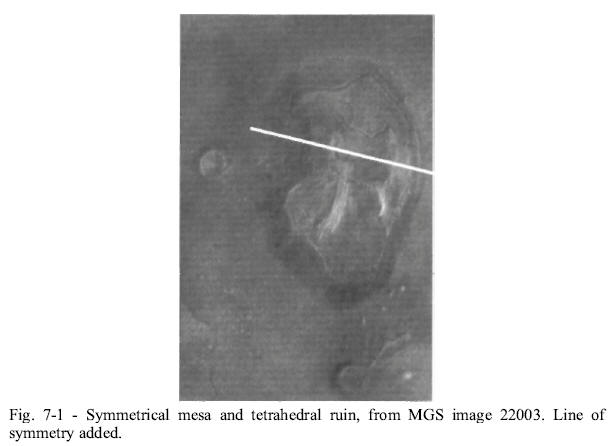
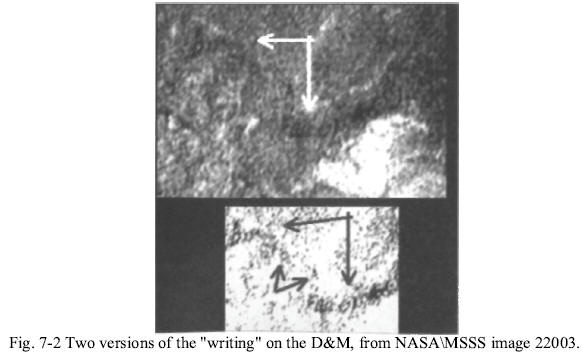
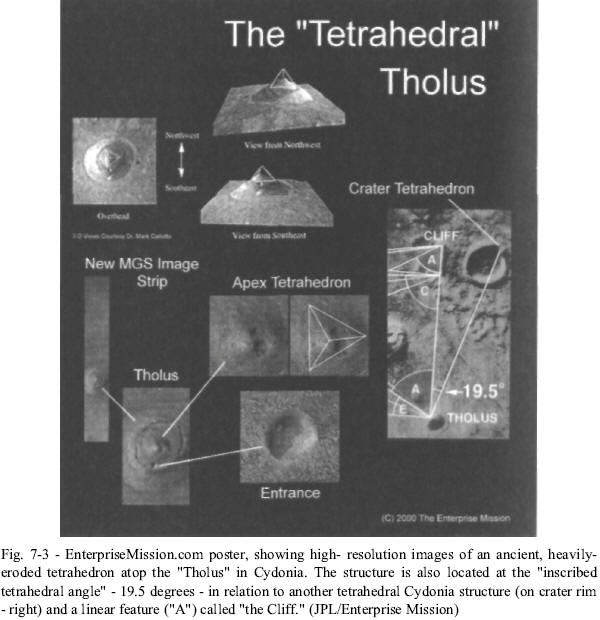
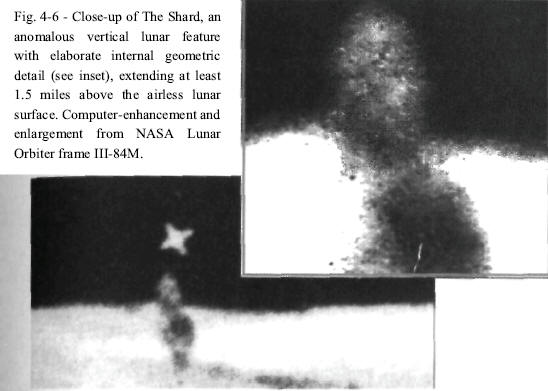
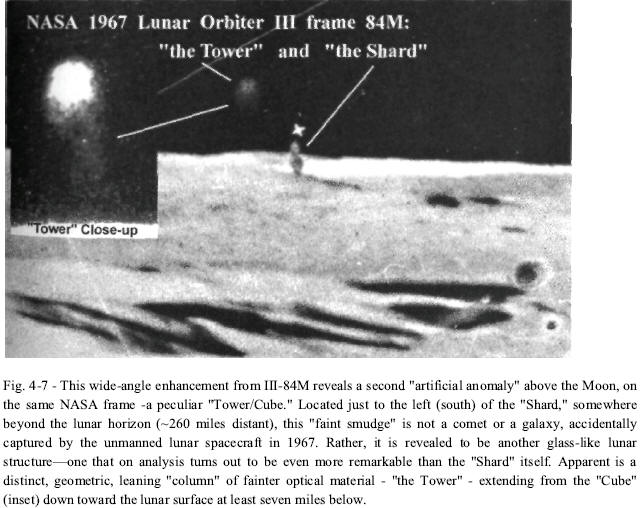
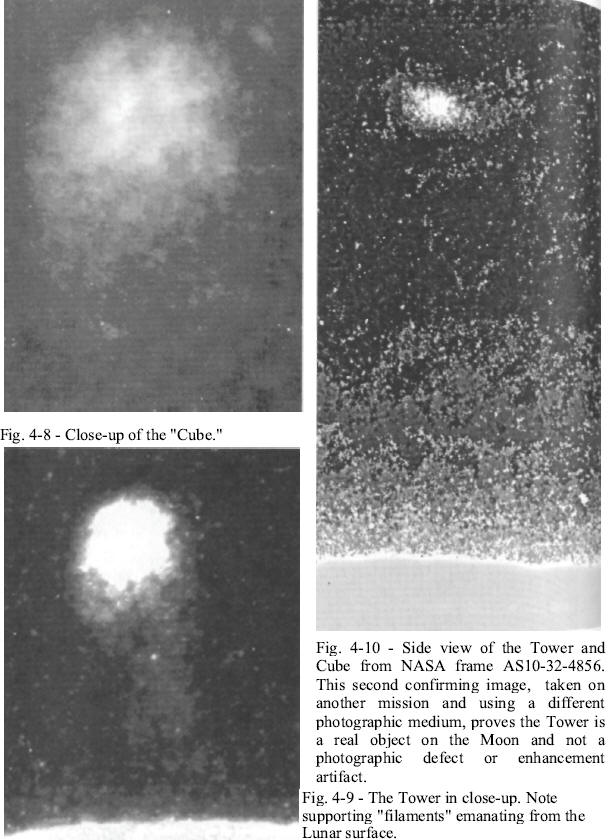
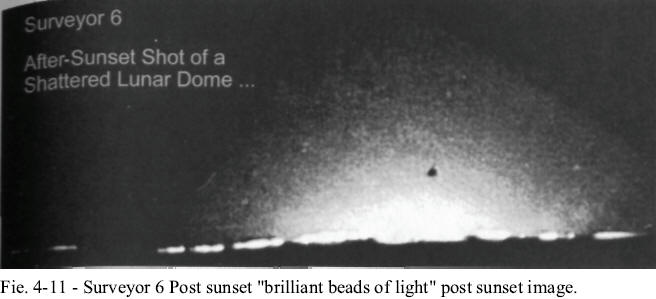
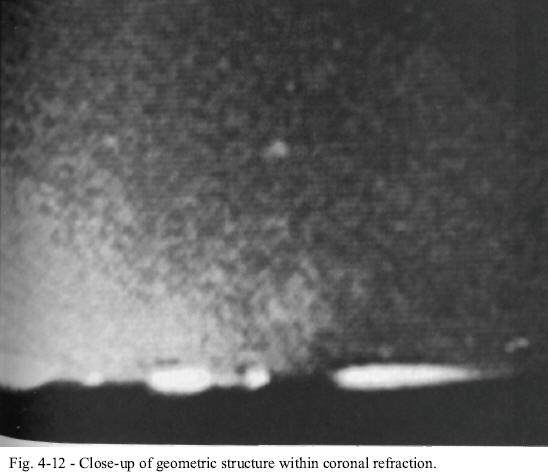
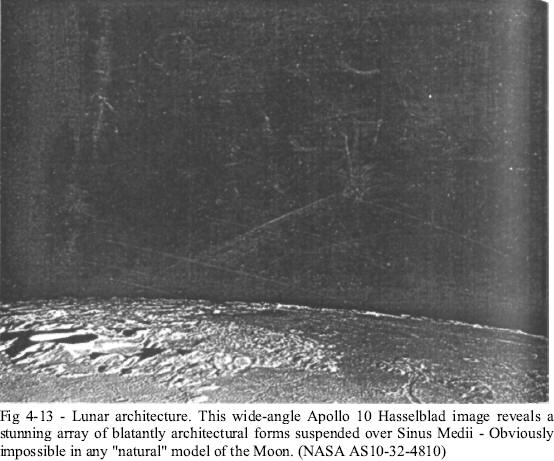
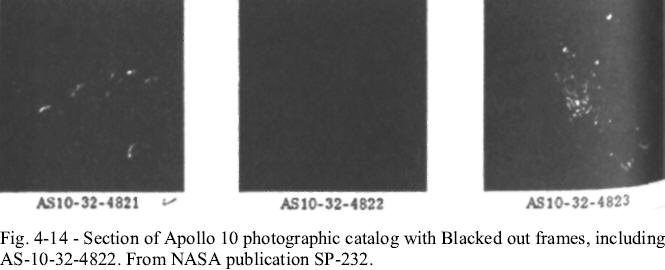
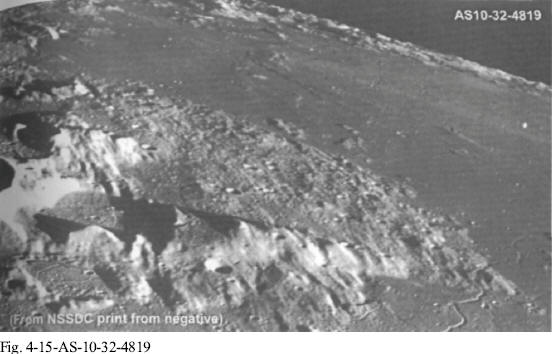
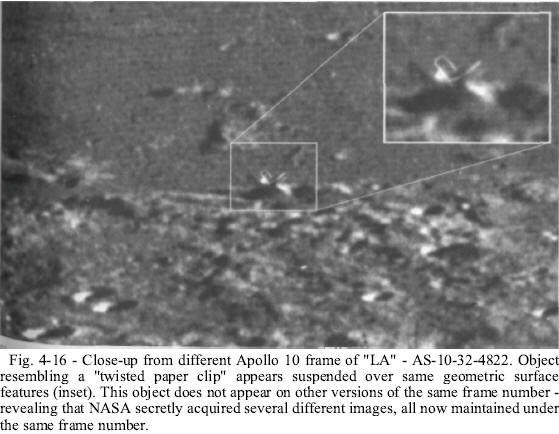
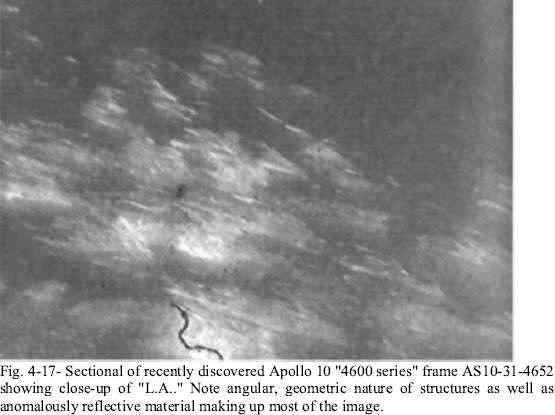
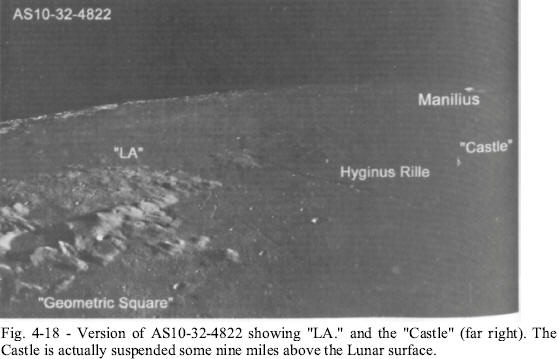
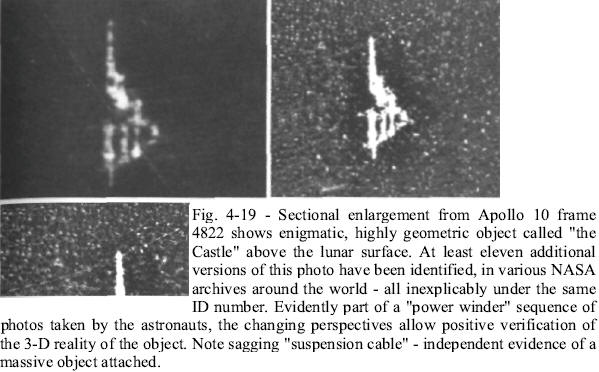
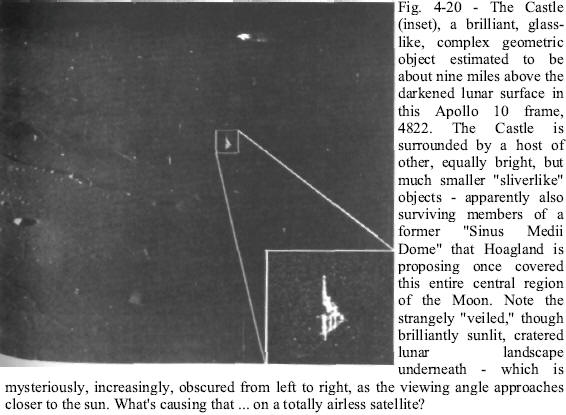
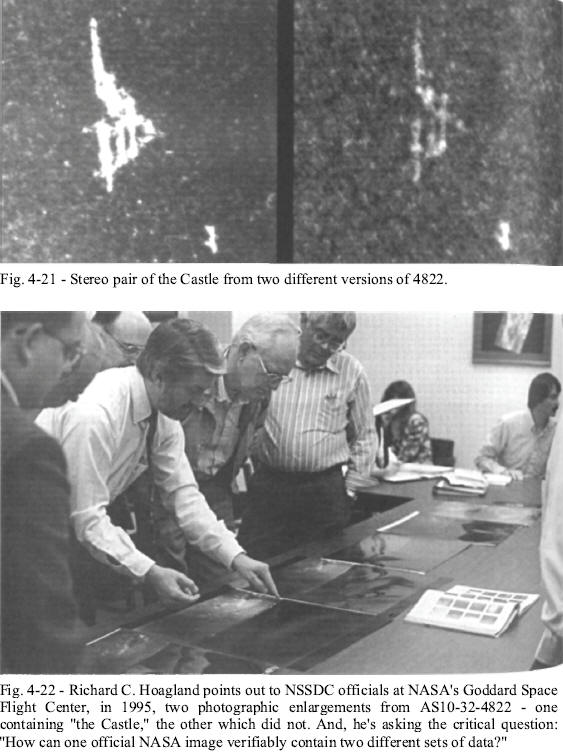
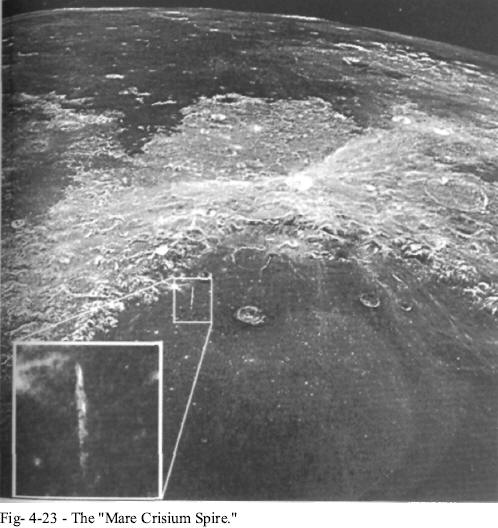
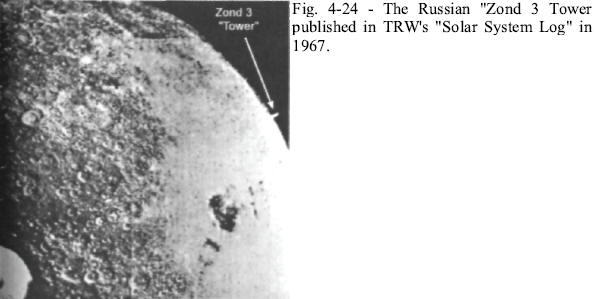
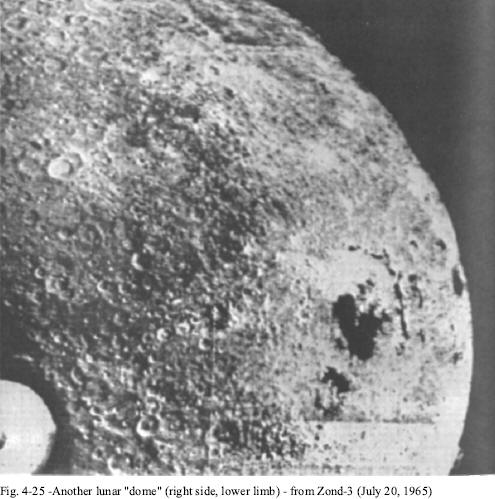
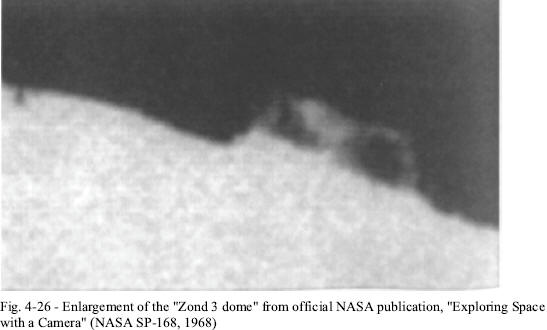
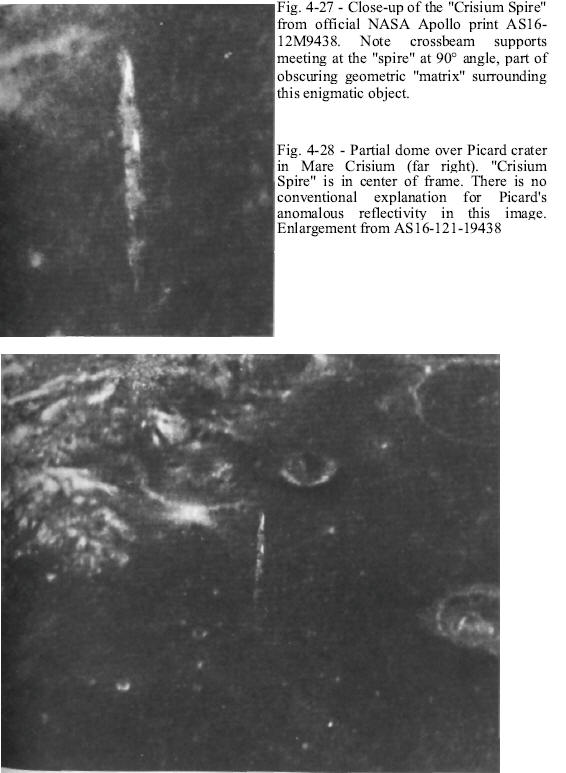
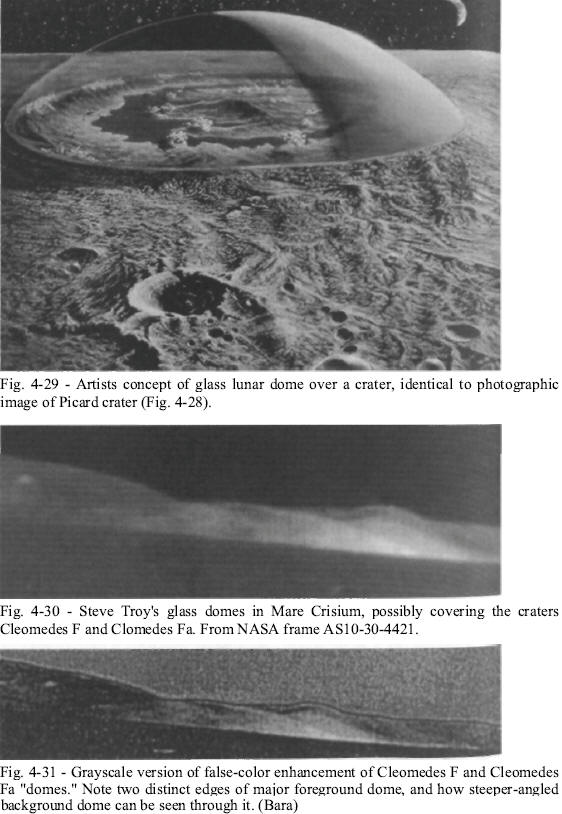
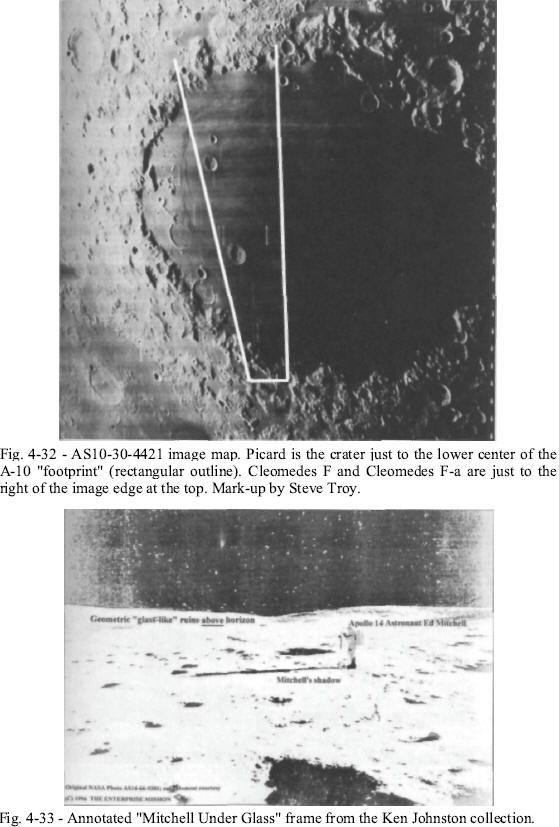
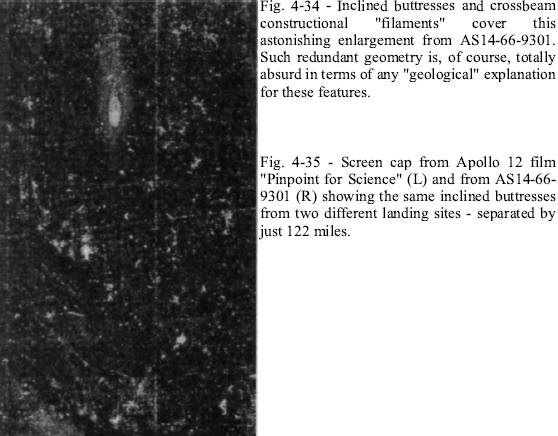
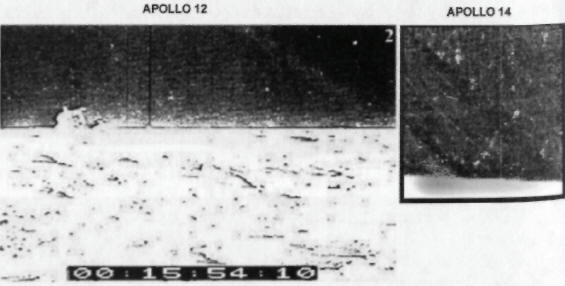
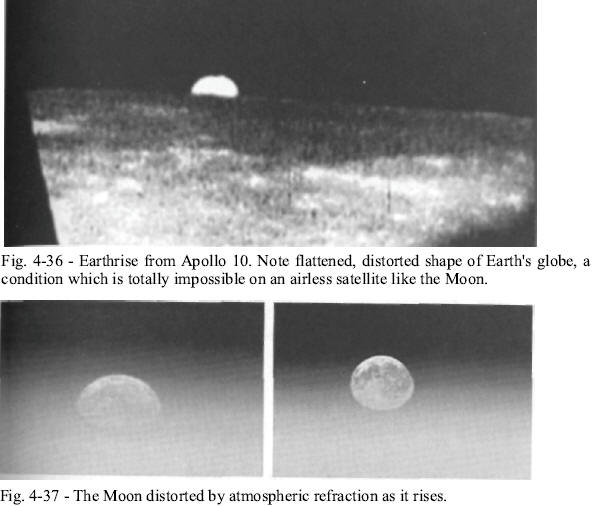
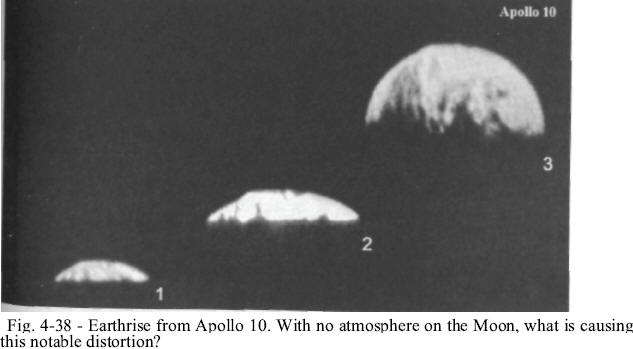
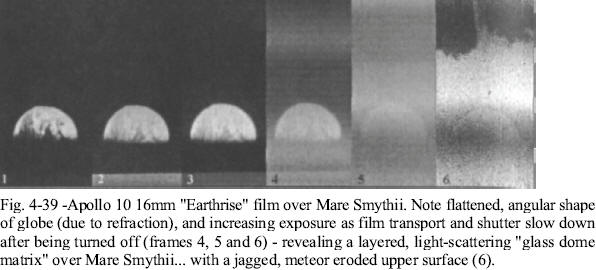
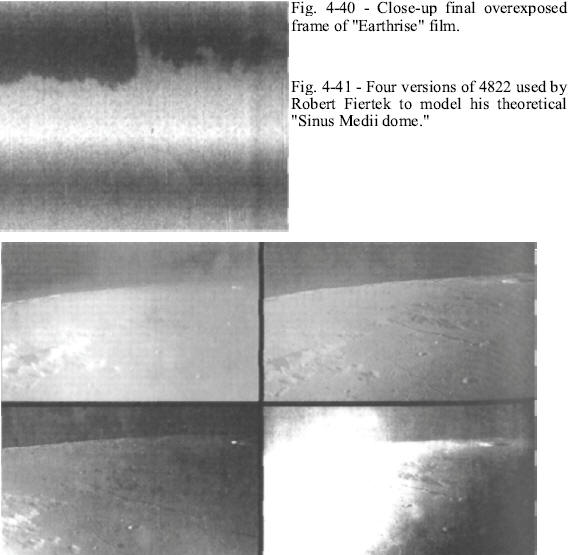
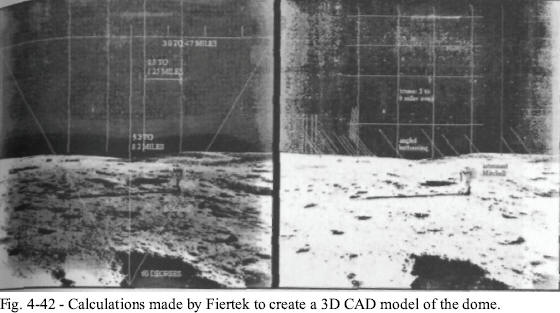
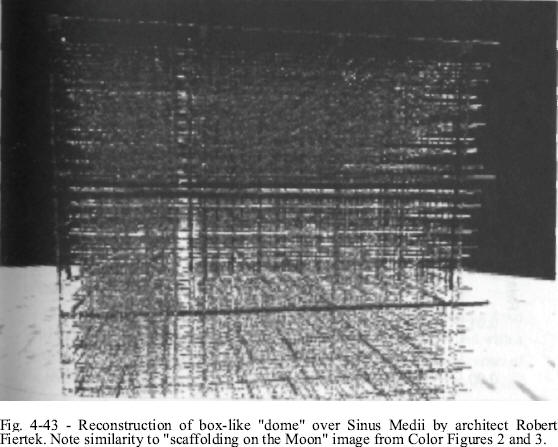
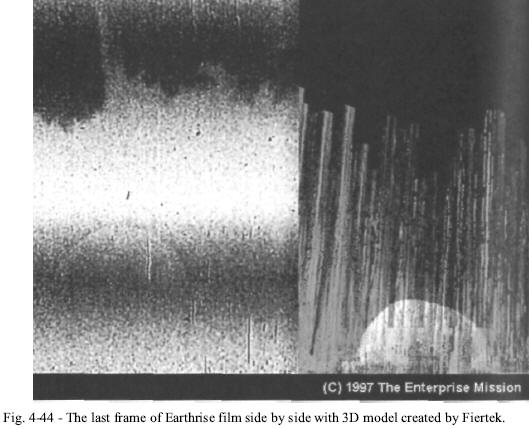
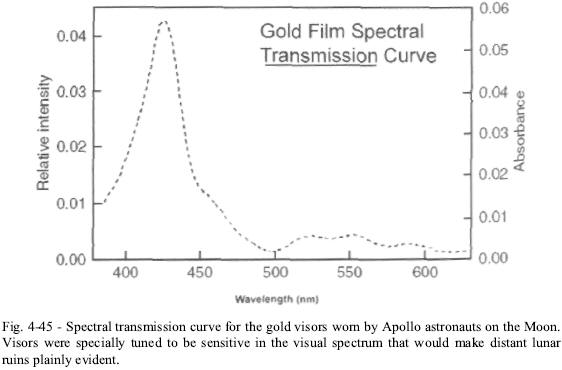
Back to Contents
|

































